On a cloudy Sunday in early April last year, I set off on a ferry journey to the Orkney Islands with my fellow Archaeology students from the University of Aberdeen, where I was studying at the time. While the Shetland Islands remain my ultimate dream destination in Scotland, Orkney was a close second, making me absolutely thrilled about the destination choice for our annual field trip.
We arrived on Orkney’s Mainland at 11 PM, most of my classmates exhausted from the long journey. I, however, was far too excited to feel tired. Finally being there felt like a dream, and I was eager for a much-needed break from exams and the often-stressful student life in Aberdeen.
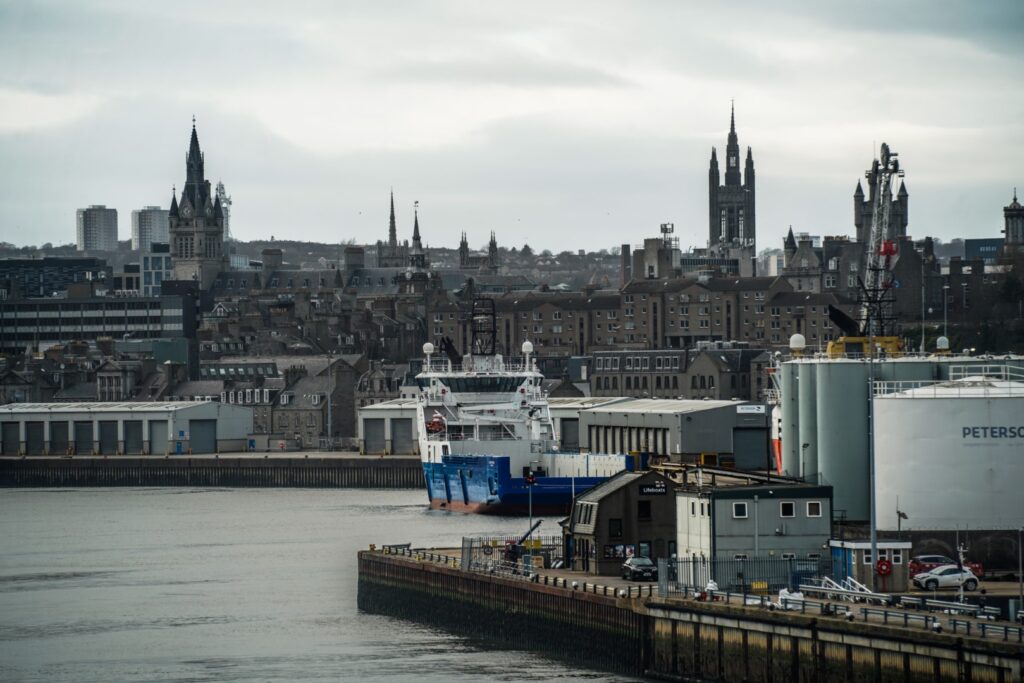
Day 1: To the heart of Neolithic Orkney
After an all-too-short night’s sleep, we left the hostel at 8:45 AM, ready for a day packed with Neolithic wonders. If there’s one thing to know about Orkney, it’s that this archipelago is the ultimate place to explore incredibly well-preserved Neolithic heritage. Our field trip couldn’t have started on a better note – our itinerary included the three most famous Neolithic sites, all designated UNESCO World Heritage sites, along with a lesser-known Neolithic tomb that ended up being my favourite discovery of the day!
Ring of Brodgar
Our first stop was the ever-popular Ring of Brodgar, a stunning Neolithic henge monument that is second in fame only to Stonehenge in southern England. It’s a shame that Stonehenge gets all the attention because many people mistakenly believe it’s unique when, in reality, henge monuments are scattered across the British Isles. I was lucky enough to visit the Calanais Standing Stones on the Isle of Lewis back in early 2020, and Orkney itself boasts two impressive examples, with the Ring of Brodgar being the largest and most complete.
The Ring of Brodgar stands on a narrow isthmus between the Lochs of Stenness and Harray, creating a striking natural setting for this ancient monument. While the exact age of the site remains uncertain, it is generally believed to have been erected during the Neolithic era, sometime between 2500 and 2000 BC.
Adding to its historical significance, the site is also home to four Bronze Age burial mounds, indicating that its importance extended well beyond its original construction. This suggests that later communities continued to recognize and use the area for ceremonial or funerary purposes, further cementing its role as a sacred landscape over thousands of years.
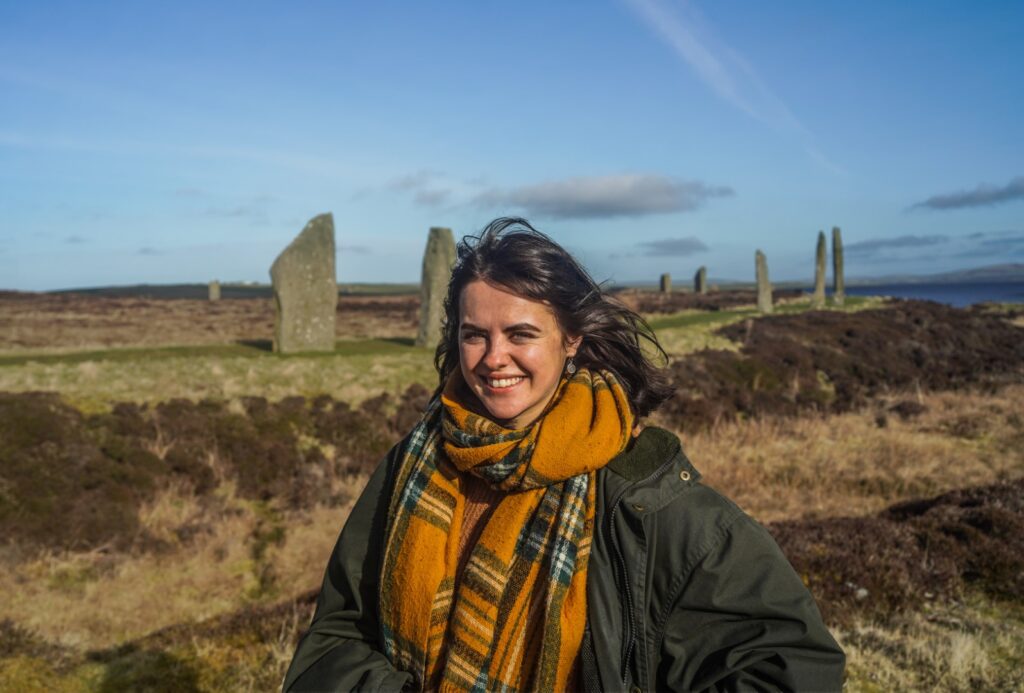
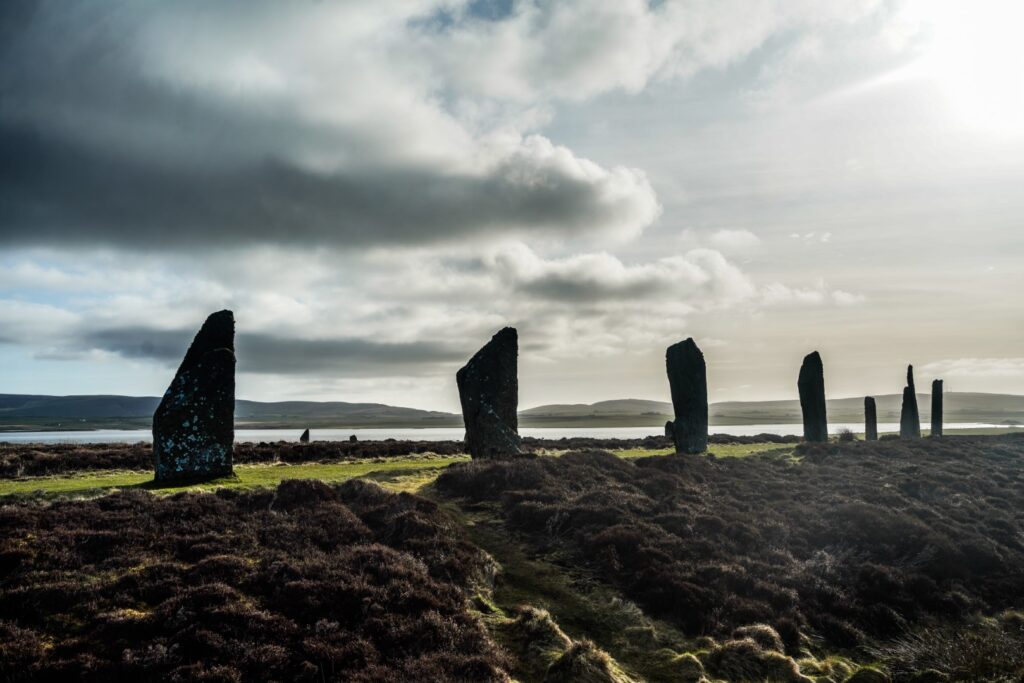
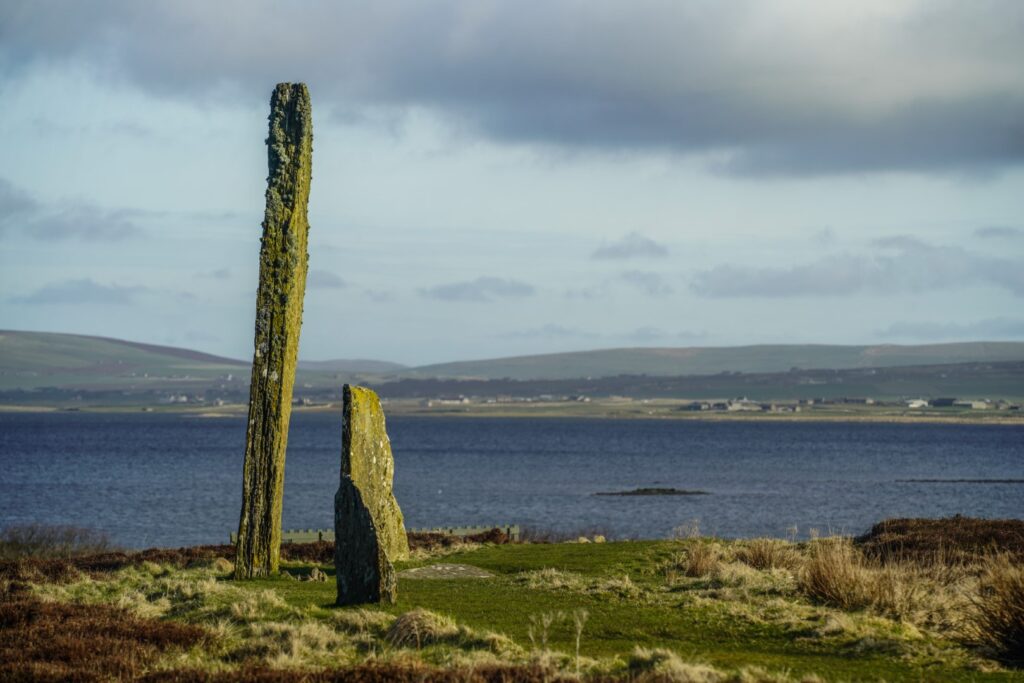
Skara Brae
Our next stop rivals some of the most famous ancient villages in the world – such as Mesa Verde and Çatalhöyük – as it is one of the best-preserved Neolithic settlements in Europe. Featuring stone-built houses complete with furniture, drainage systems, and storage compartments, Skara Brae is often called “Scotland’s Pompeii” for its extraordinary glimpse into daily life during the Neolithic era.
Seeing the village in person was absolutely fascinating – it was much larger than I had expected. Equally impressive was its breathtaking setting, perched above a sandy beach with turquoise waters, making it one of the most picturesque archaeological sites I’ve ever visited.
To complete the experience, we explored the visitor centre’s museum, which offered deeper insights into the site’s history, and stepped inside a reconstructed Neolithic house, bringing everything we had just seen to life in a truly immersive way.
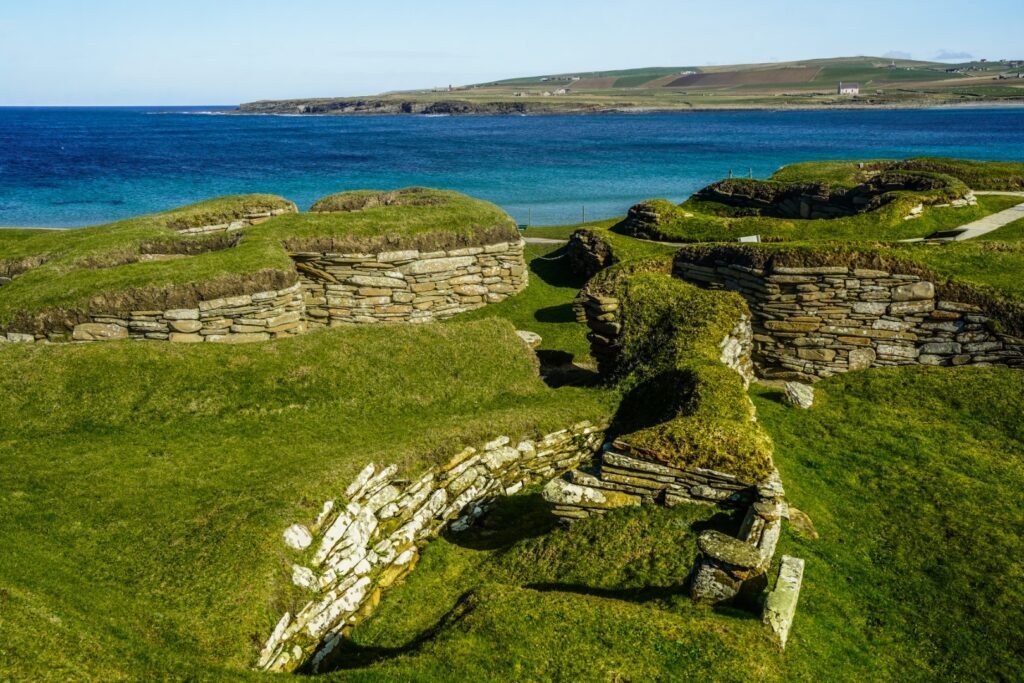
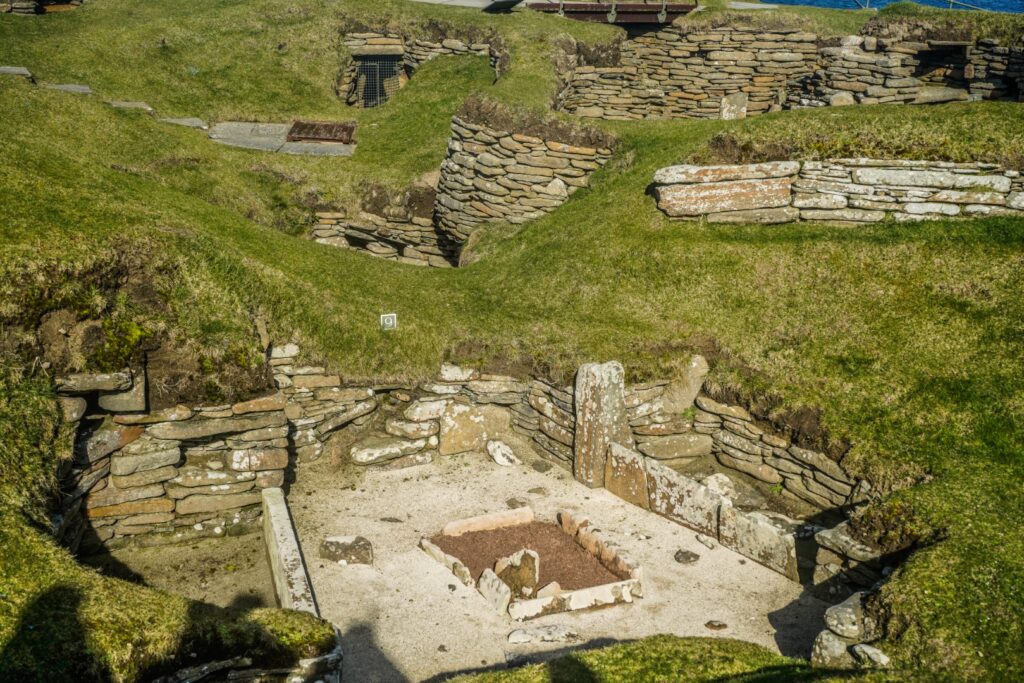
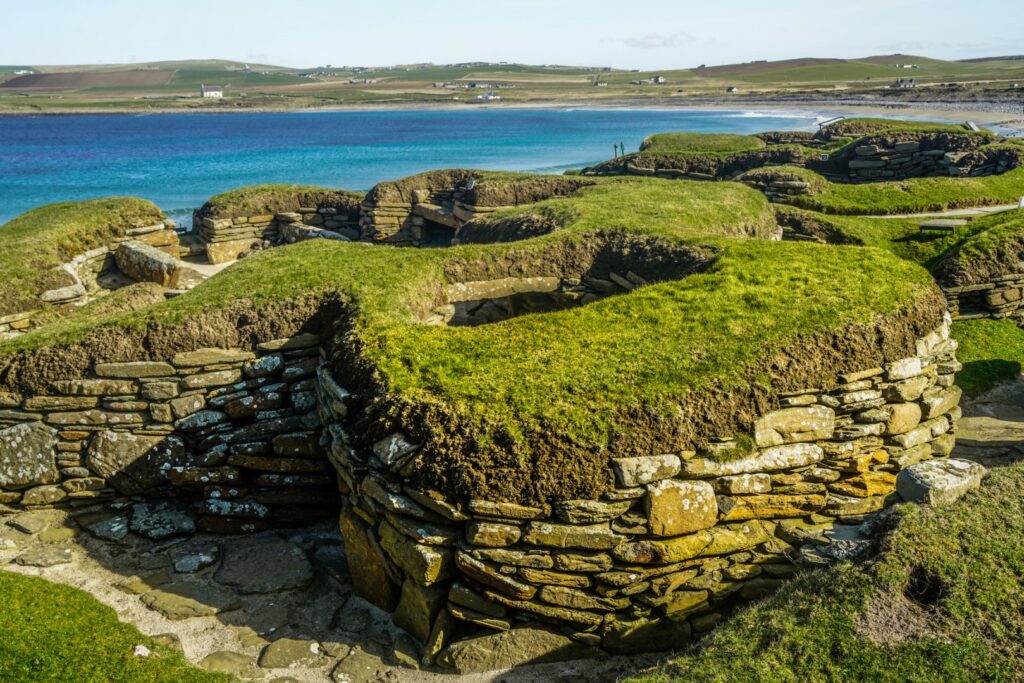
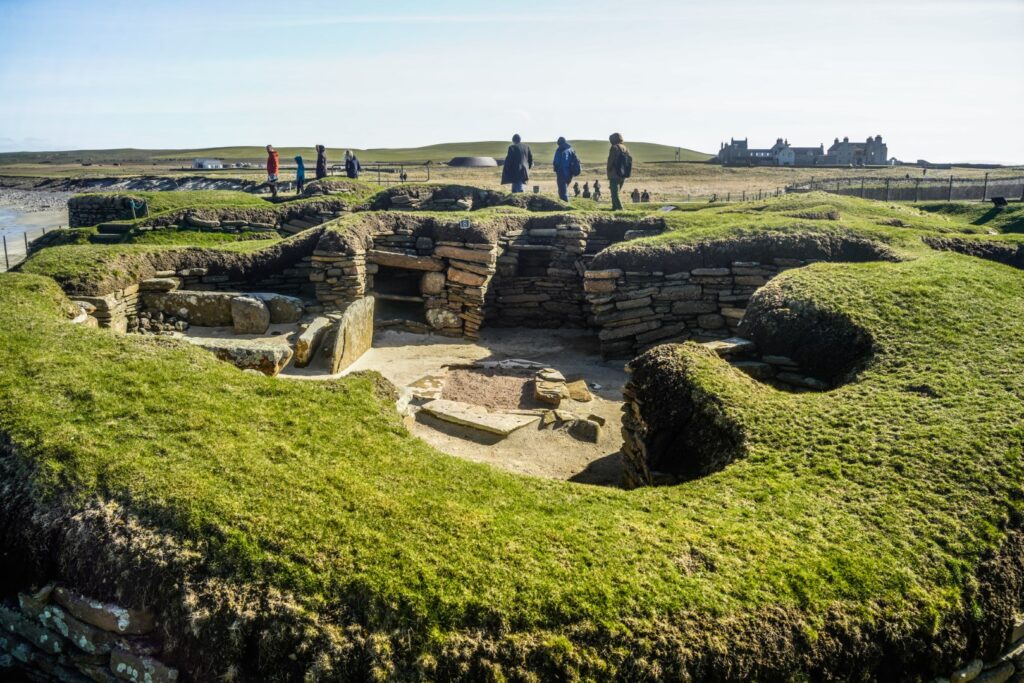
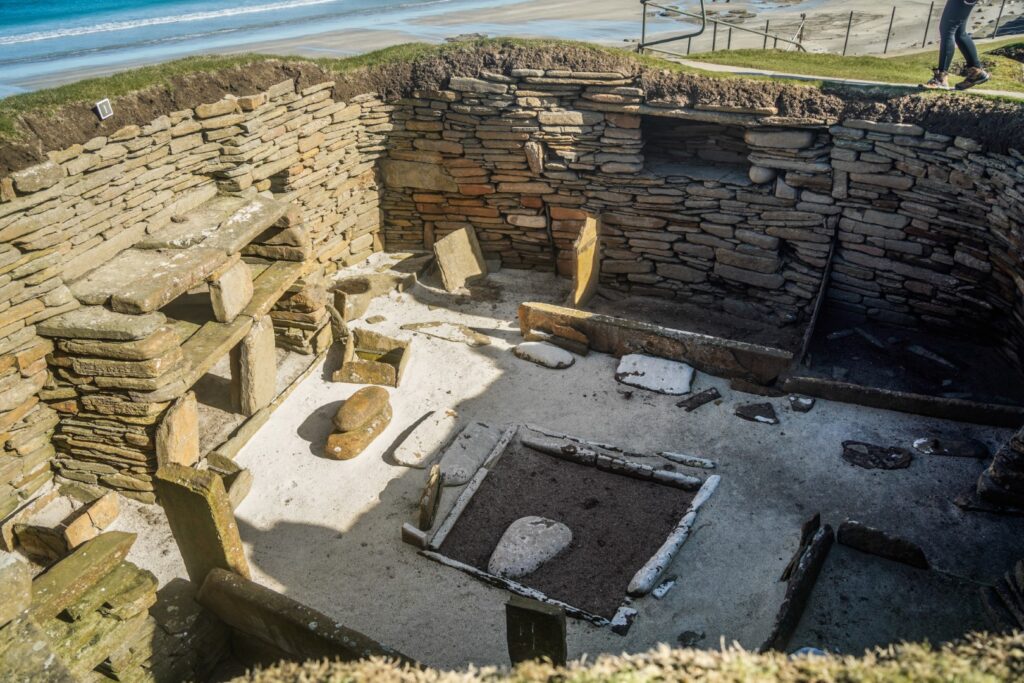
Lunch at Merkister Hotel
On our way south, we stopped at the Merkister Hotel for a delightful lunch of sandwiches, warm soup, and cake. They had even prepared a special vegan plate for me, which was lovely! As we ate, we enjoyed the beautiful view over the Loch of Harray, making for a perfect midday break.
Stones of Stenness
The next site was the one I was both most excited and most nervous about. Excited because I had spent weeks preparing an academic poster and presentation on it, and nervous because I don’t enjoy doing presentations. Thankfully, it went well, and I even managed to incorporate Taylor Swift into it – our title, Never Go Out of Style, was inspired by her song Style! On the way there, I gave a short speech on the bus about how the Stones of Stenness could surely relate to her lyrics, as they share one very important trait – they truly never go out of style!
And that timelessness is exactly what makes the Stones of Stenness so unique. Despite being among the oldest known stone circles in Britain, dating back to around 3100-2900 BC, they still stand as a striking reminder of Neolithic craftsmanship, culture, and beliefs. While only a few stones remain upright today, their sheer size and placement suggest they once formed a highly significant ceremonial or ritual site.
Barnhouse
Largely overshadowed by Skara Brae, Barnhouse is another exceptionally well-preserved Neolithic village, though it receives far less attention. Unlike Skara Brae, which was buried and protected by sand for centuries, Barnhouse was uncovered in a cultivated landscape, leaving fewer structures intact. However, what remains provides invaluable insight into Neolithic life, particularly in connection with nearby monuments.
Barnhouse is just a short walk from the Stones of Stenness, which suggests that the people who once resided at Barnhouse may have played a key role in constructing the standing stones.

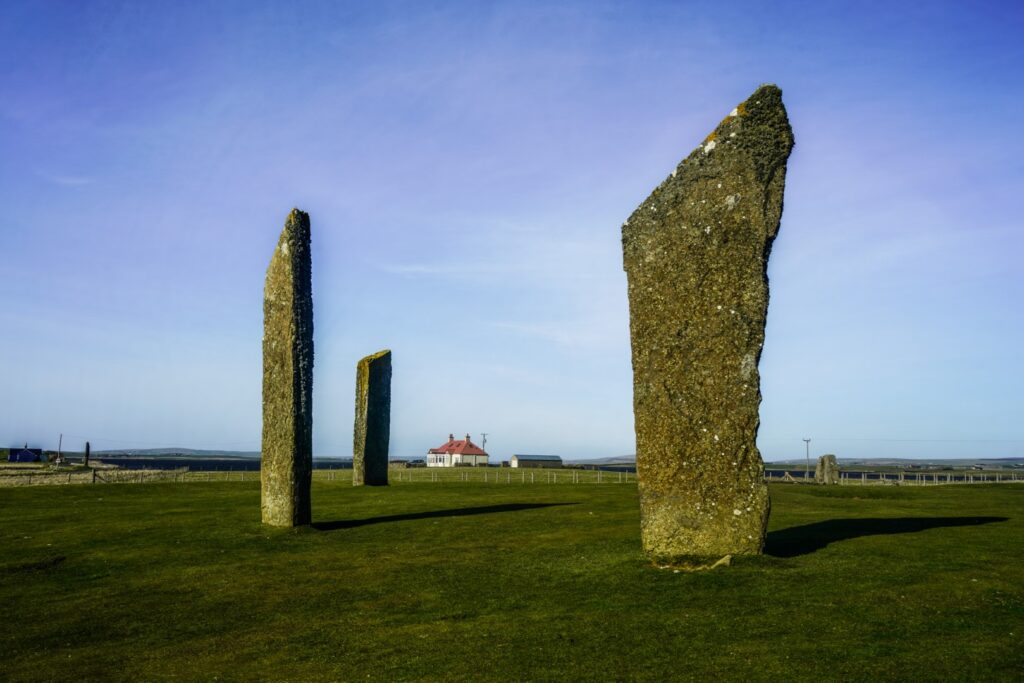
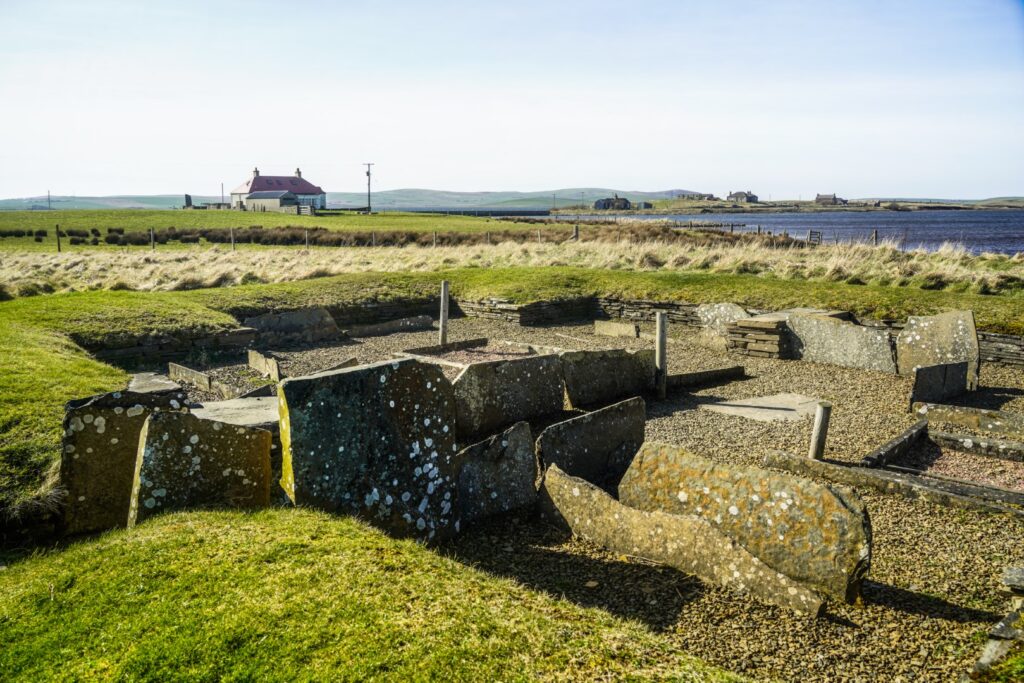
Cuween Hill Chambered Cairn
The last stop of the day isn’t part of the UNESCO World Heritage site, though I truly believe it deserves to be. Cuween Hill Chambered Cairn is a remarkable Neolithic tomb built into the hillside, dating back to around 3000-2400 BC.
We entered the tomb in small groups due to its size, but I was surprised by how spacious it was inside. Despite its relatively compact exterior, I could actually stand up straight without hitting my head on the ceiling – something not often possible in other similar Neolithic structures, such as Danish passage graves, where even someone of shorter stature like myself often has to duck.
Before visiting, I had read that the tomb contains scratch art from the Neolithic period, so my friend Sara and I eagerly searched the walls for any signs of this artwork. We think we may have found a few markings, though it’s difficult to say for sure. I also spotted some runes, though it’s unclear whether they are of Norse or modern origin.
At the top of Cuween Hill, a few hundred meters above the cairn, there’s an art installation made up of cairns that some of us decided to explore. The cairns are scattered across the hilltop, creating an intriguing contrast with the natural landscape and ancient tomb below. The installation felt like a modern connection to the prehistoric spirit of the place.
Above all, it was the perfect way to end a beautifully sunny day – standing atop Cuween Hill, looking out over Orkney with a birds-eye view of the islands. Despite the strong wind that nearly blew us off the hillside, the view was worth it!
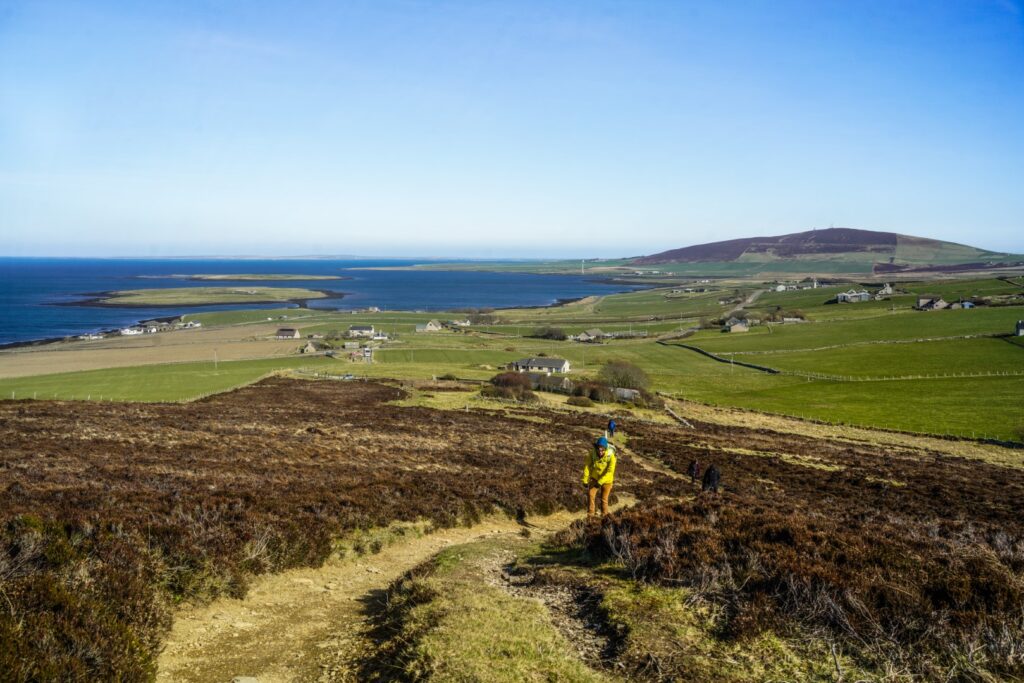
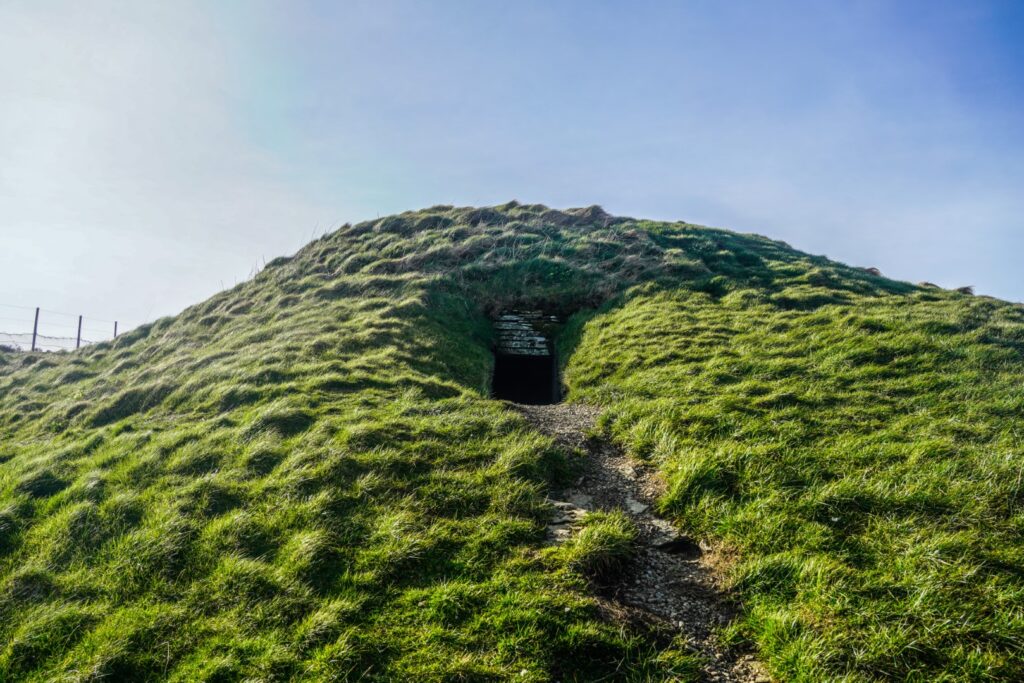
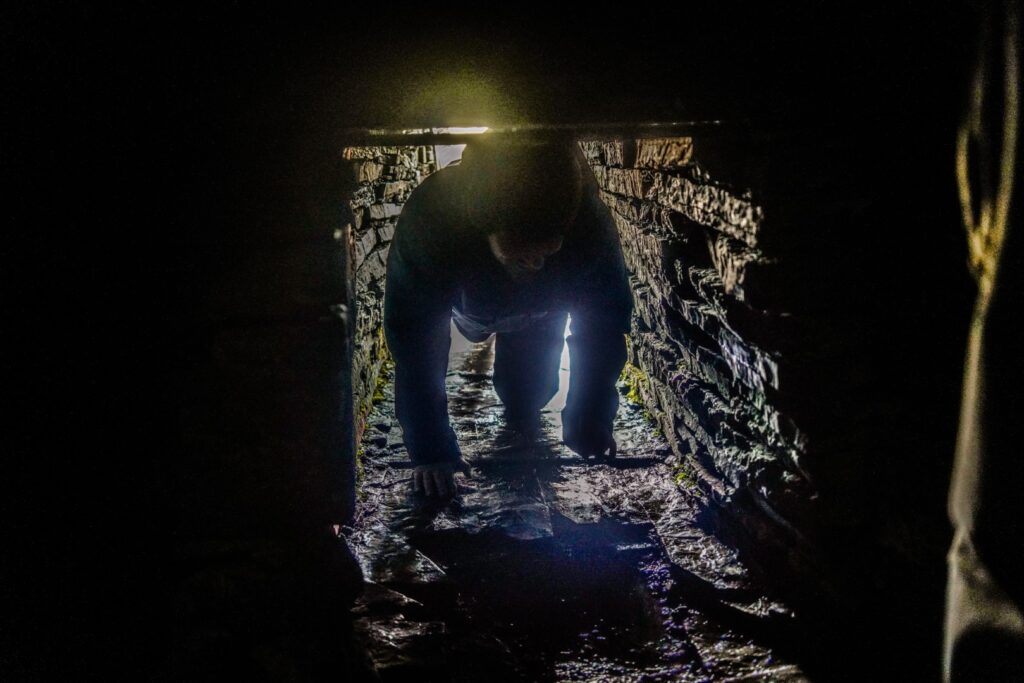
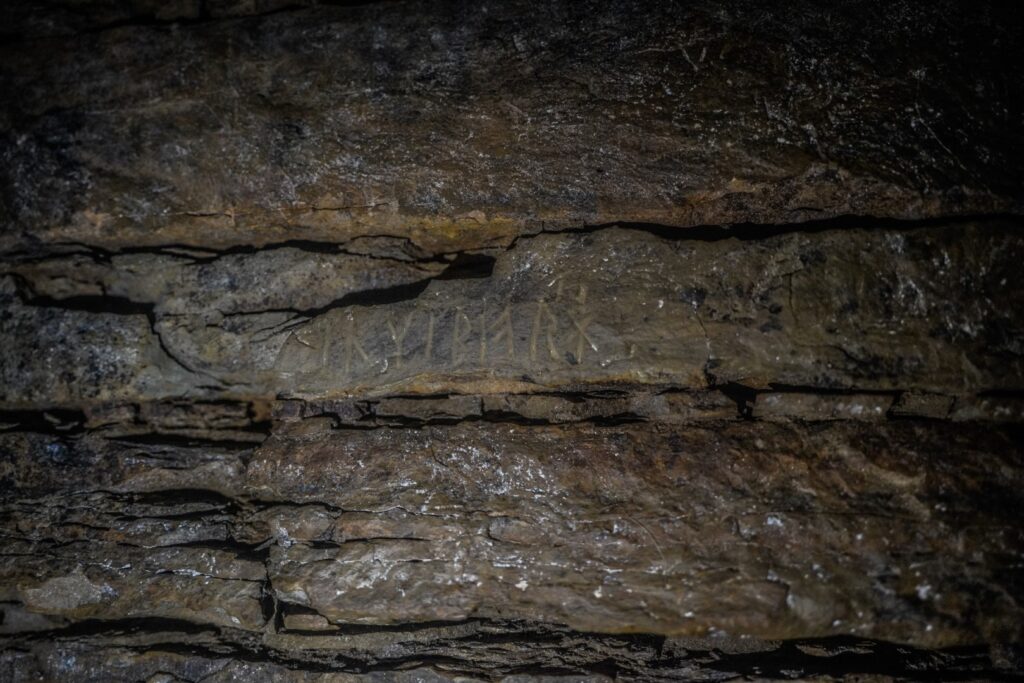
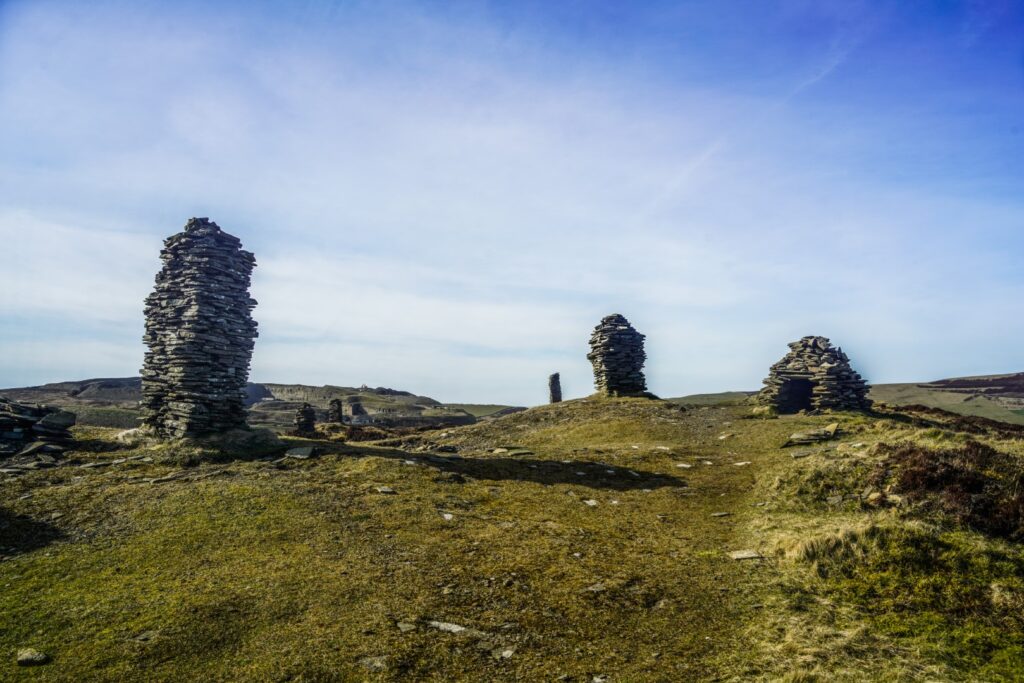
Day 2: Iron Age, Medieval & Early Modern Orkney
The second day began with a later departure at 9:30 AM, which was a welcome change after the packed schedule of the previous day. This time, we explored a mix of Iron Age, Medieval, and Early Modern sites around Kirkwall and the rest of Mainland Orkney, before spending the evening presenting our posters. Oh, and it was also my birthday!
A walk through old Kirkwall
We started the morning with a walk through the old centre of Kirkwall, where our lecturers pointed out some of the historic townhouses along Victoria Street, dating back to the 17th–20th centuries. The street is characterized by narrow passages and dense development, and many structures bear inscriptions and dates from as early as 1679.
The walk ended at Tankerness House, the oldest surviving domestic building in Kirkwall, which now houses the local museum of Orkney.
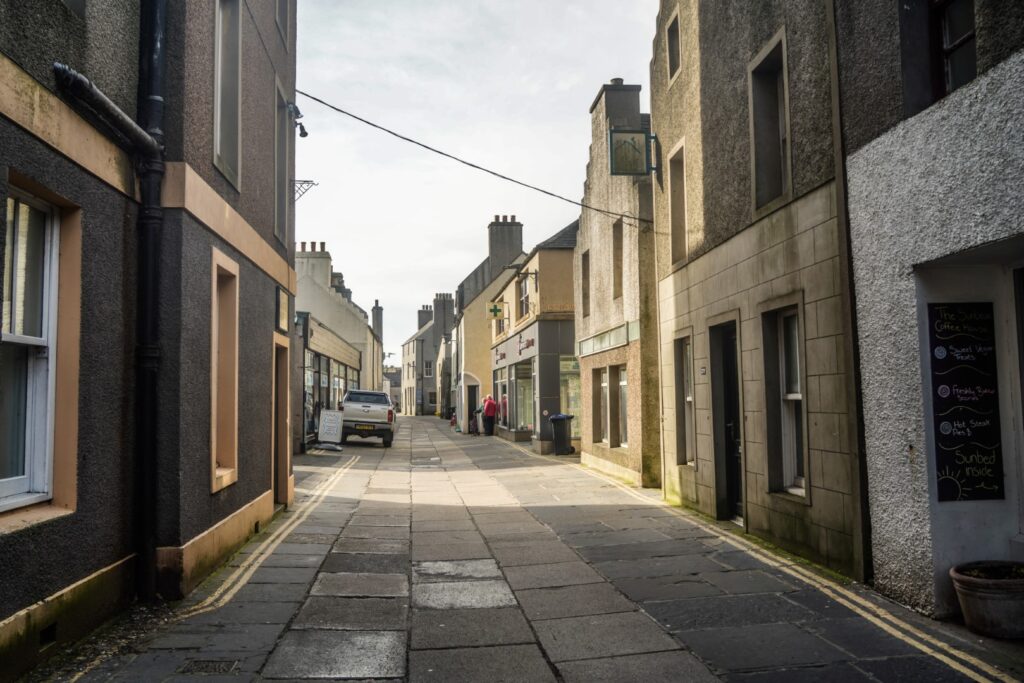
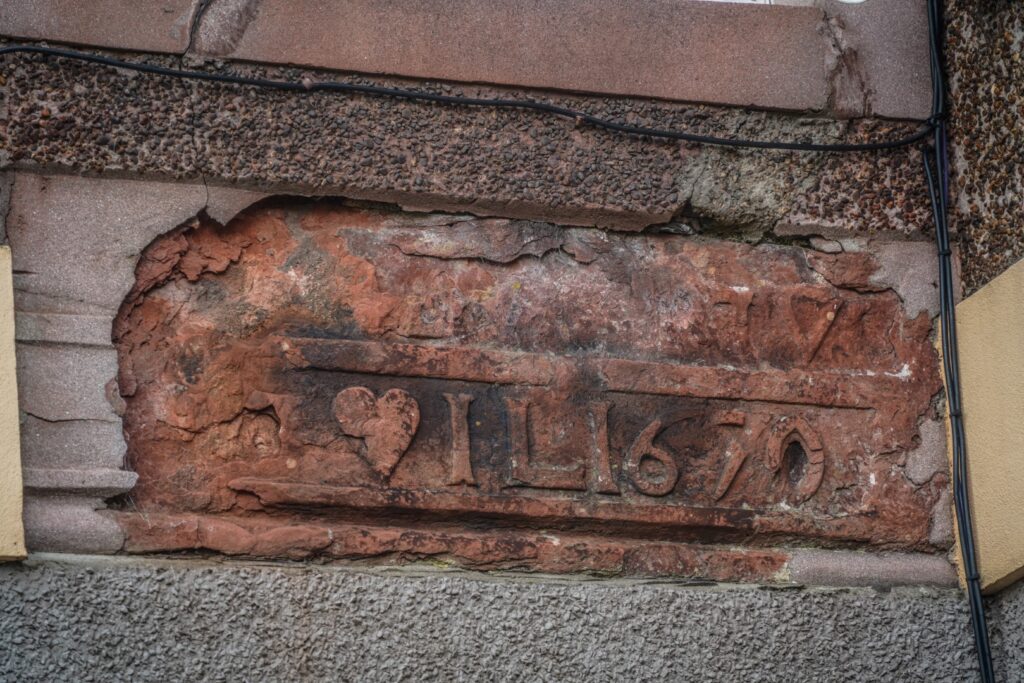
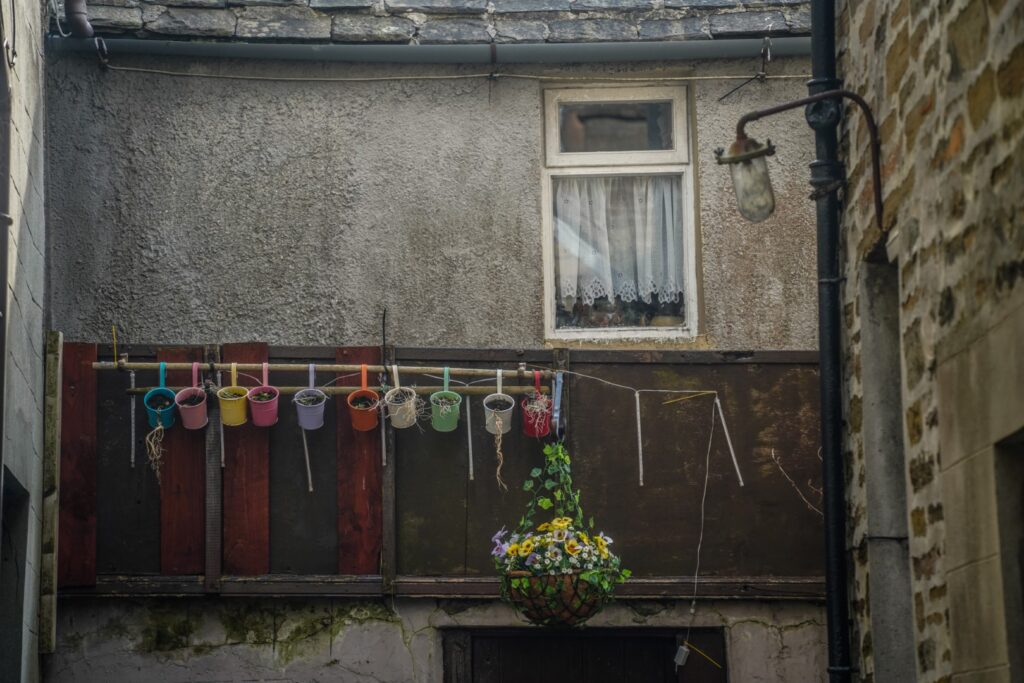
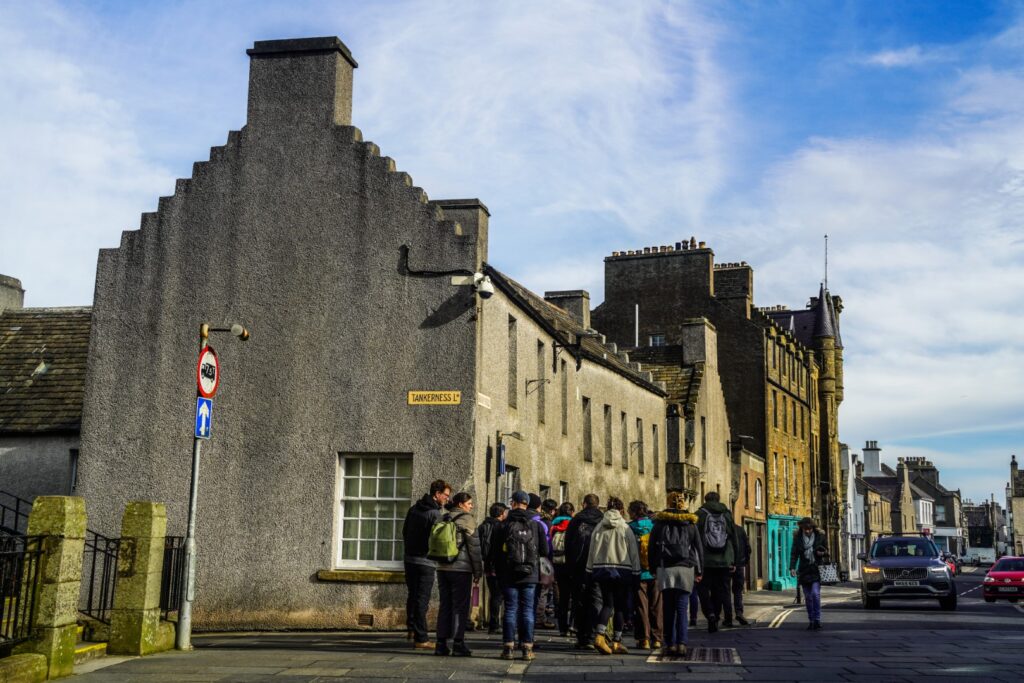
St Magnus Cathedral
Opposite Tankerness House stands St Magnus Cathedral, the most prominent structure in Kirkwall’s townscape. Its striking red and yellow sandstone walls rise high above the town, and on clear days, it can even be seen from the Scottish mainland.
A kind and knowledgeable custodian gave us a tour, sharing the intriguing story of St Magnus and the cathedral’s history. Founded in 1137 by Earl Rognvald, the cathedral was built in honour of his uncle, Magnus Erlendsson, the Earl of Orkney, who was martyred in the early 12th century. The cathedral became a place of pilgrimage, and over the centuries, it has remained one of Scotland’s most important medieval churches.
Fascinatingly, St Magnus Cathedral is the only church in Scotland that still holds the bones of its saint as some of St Magnus’ remains were discovered inside a pillar in 1919!
Orkney Museum
After visiting the cathedral, we had the opportunity to explore Orkney’s local museum, which houses a vast collection of artifacts spanning from the Neolithic period to more recent history.
The exhibits showcases everything from beautifully crafted prehistoric tools and pottery to Viking-era relics and items from Orkney’s wartime past.
Lunch and thrift shops
While walking through Victoria Street in the morning, I counted all the thrift shops we passed – no less than five! That’s quite a lot for a town like Kirkwall, which is home to only around 10,000 people.
Since we had a full hour for lunch, I decided to grab something quick from a supermarket and spend the rest of the time exploring the thrift shops. I’m so glad I did because I ended up with an oversized blue and white striped linen shirt, genuine Harris Tweed gloves, and a cute little ornament – all for just nine pounds in total!
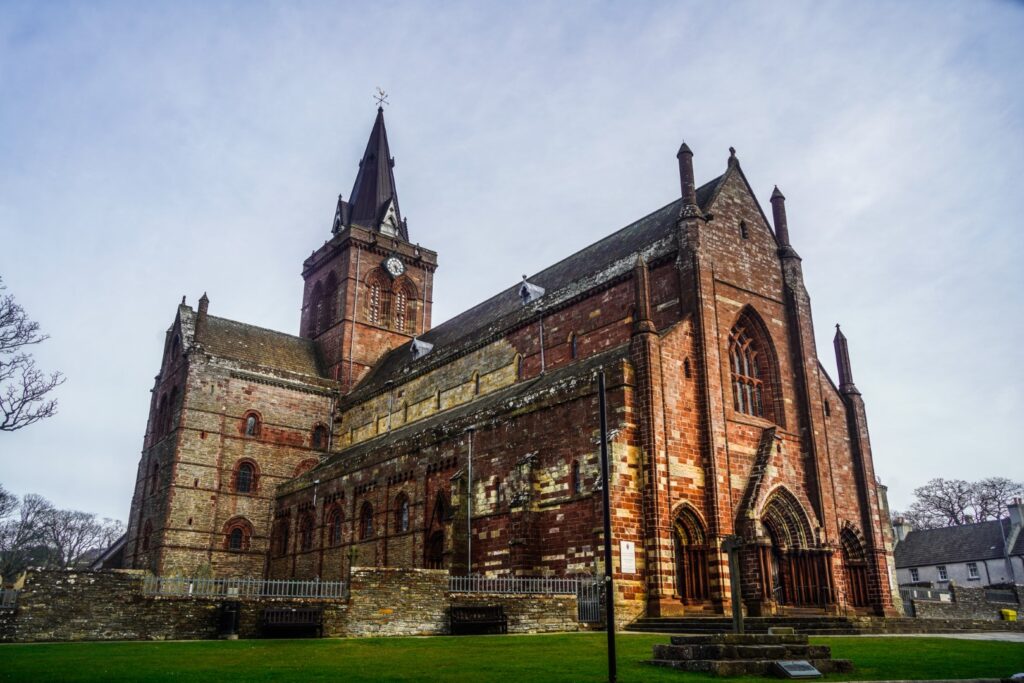
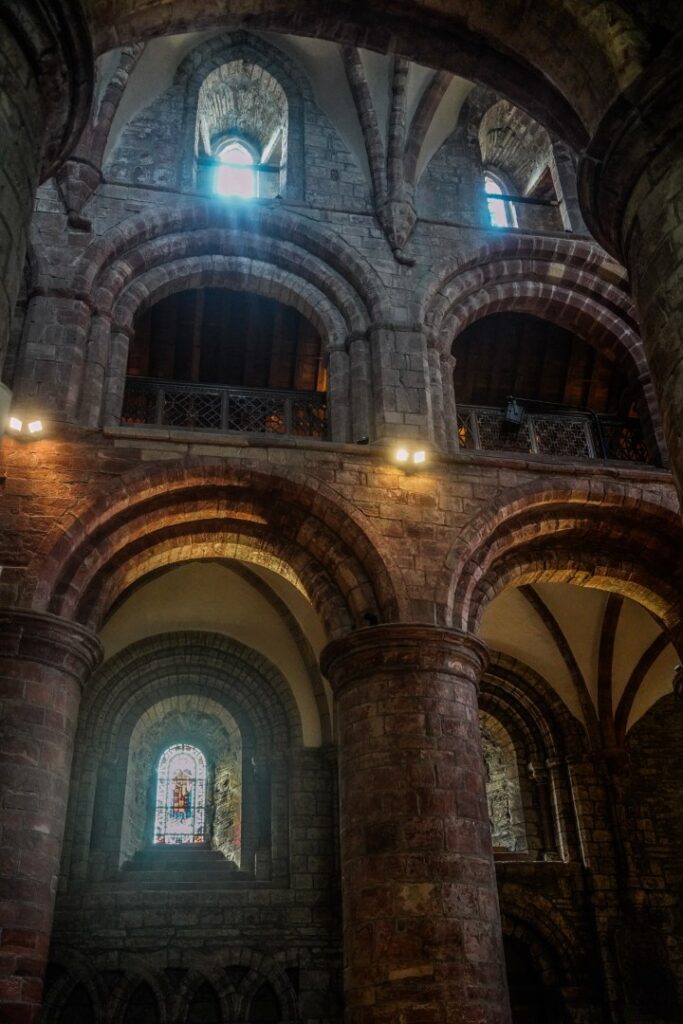
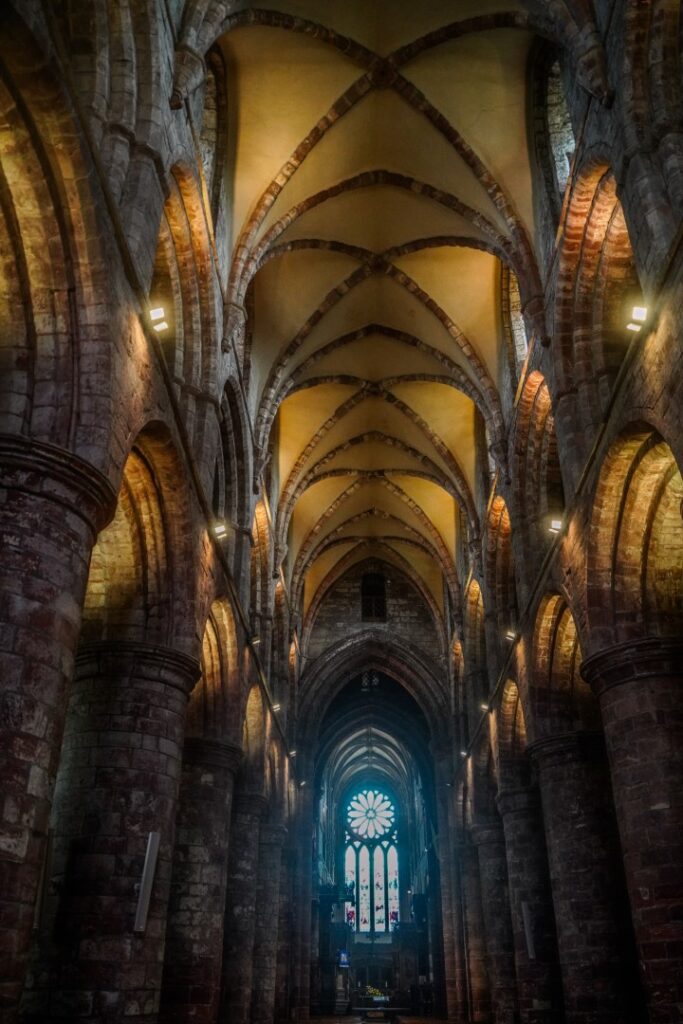
Earls and Bishops Palaces
After our lunch hour, we met up at the Earl’s Palace, where we had pre-booked entrance. Unfortunately, we were informed that we wouldn’t be able to go in as construction was still underway on the site. The neighboring Bishop’s Palace was also closed, so all we could do was admire the ruins of both palaces from the outside.
The Earl’s Palace was built in the late 16th century by Patrick Stewart, the Earl of Orkney. It was an impressive Renaissance-style mansion with four towers and a large courtyard. Over the years, it was used as both a noble residence and administrative center. After Patrick Stewart’s fall from power, the palace fell into disrepair and was eventually abandoned.
The Bishop’s Palace was constructed in the 12th century as the residence of the bishops of Orkney. It remained in use until the Reformation, after which it was abandoned and fell into ruin. Both of these palaces are now important historical landmarks in Kirkwall, offering a glimpse into Orkney’s medieval and early modern past.
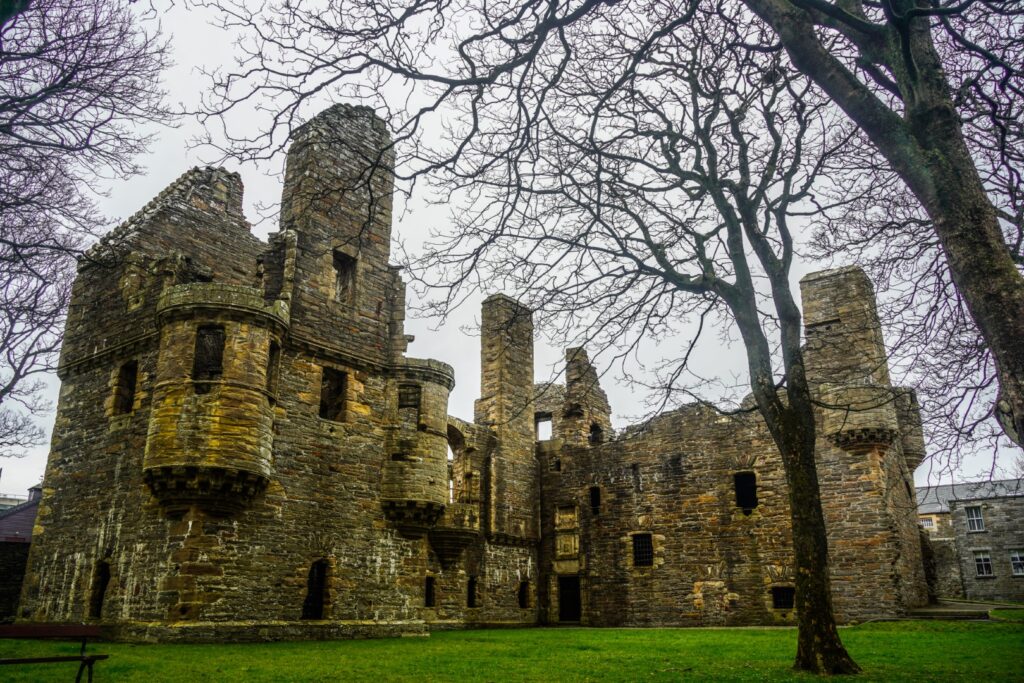
The tidal island of Brough of Birsay
It wasn’t until 2 PM that we left Kirkwall to head to the Brough of Birsay, a tidal island off the northwest coast of Mainland Orkney. The Brough is well known for its lighthouse, rocky cliffsides, and archaeological sites, the latter of which was the focus of our trip.
The Brough of Birsay has significant archaeological importance due to its history as a settlement in both the Pictish and Norse periods. The remains of Pictish structures blend into the landscape on the island, alongside later Norse buildings, including a church and several domestic dwellings. The site also has evidence of early Christian activity, making it a fascinating example of the intersection of different cultures over time.
The walk over was easy and enjoyable, thanks to a long stone bridge and large rocks, but you do need to be mindful of the tidal schedule, as the island can only be accessed at low tide.
I was a little bummed that we didn’t have time to explore the lighthouse and the cliffs, but since Sara and I stayed on Orkney for an additional five days after the field trip, we found time to return. It was well worth it!
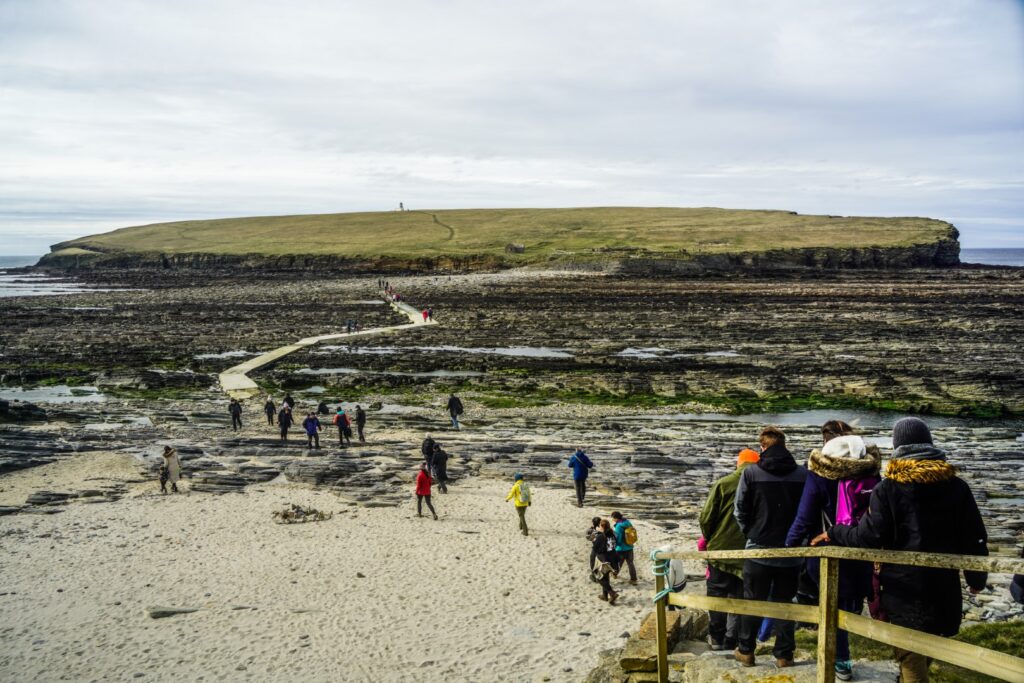
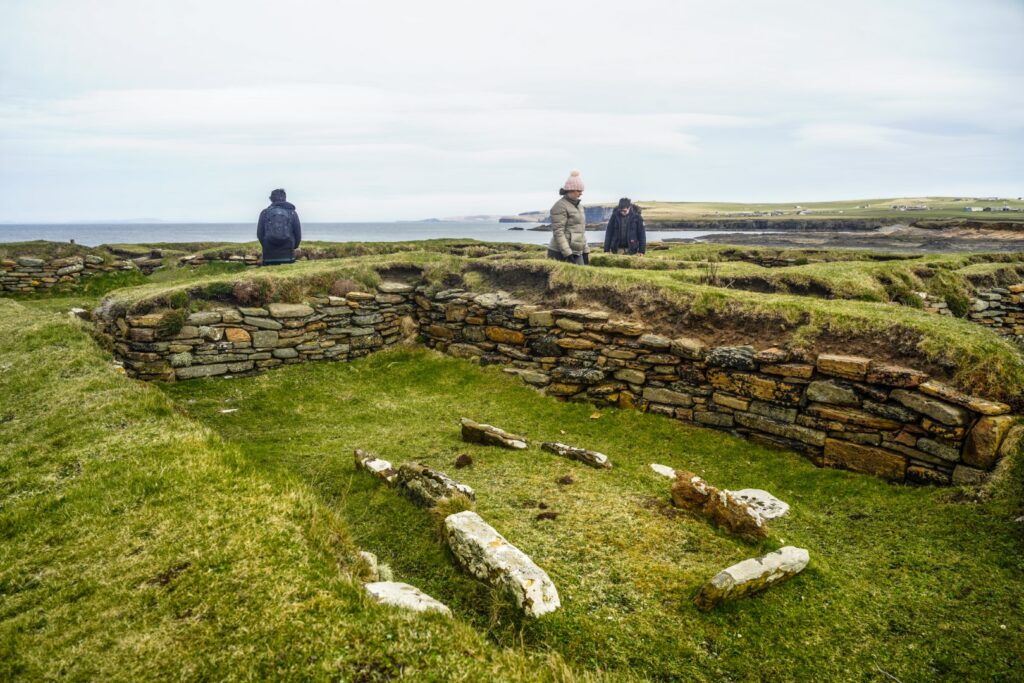
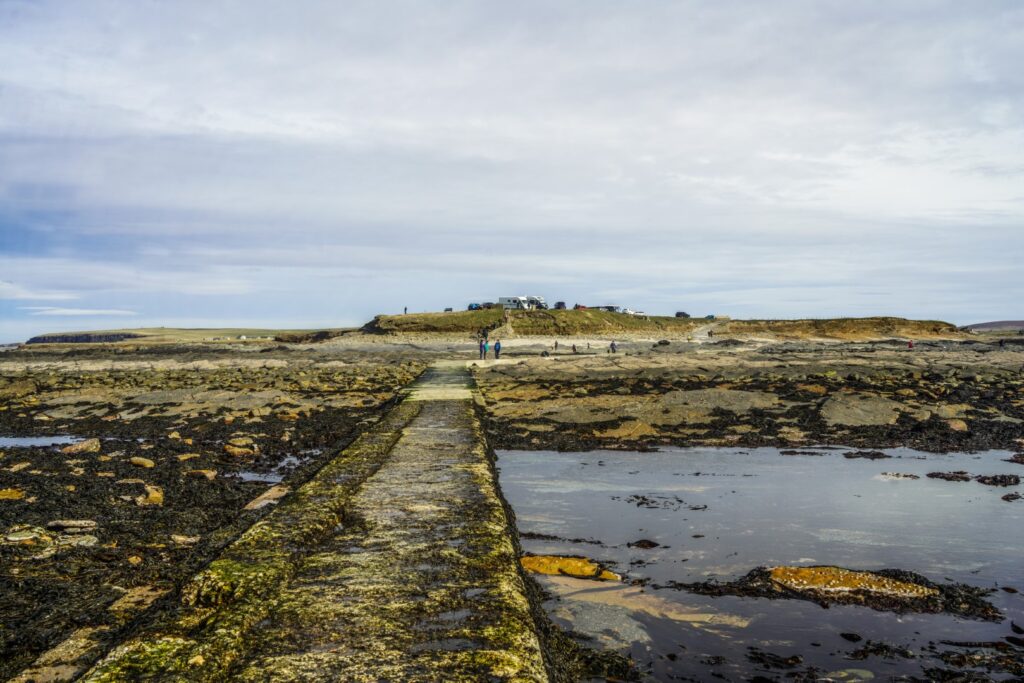
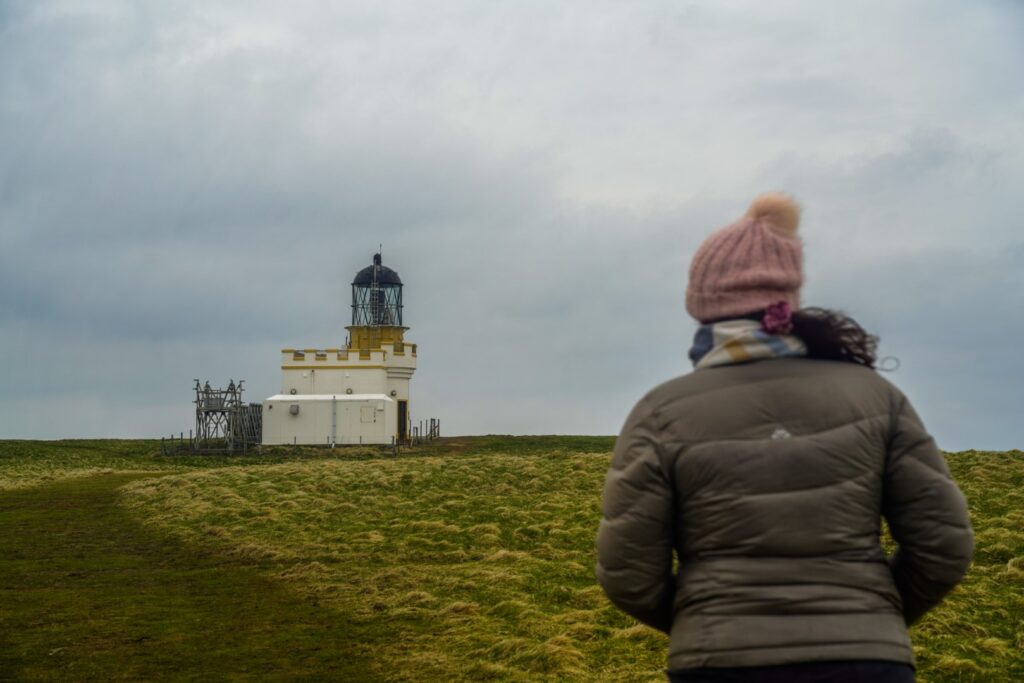
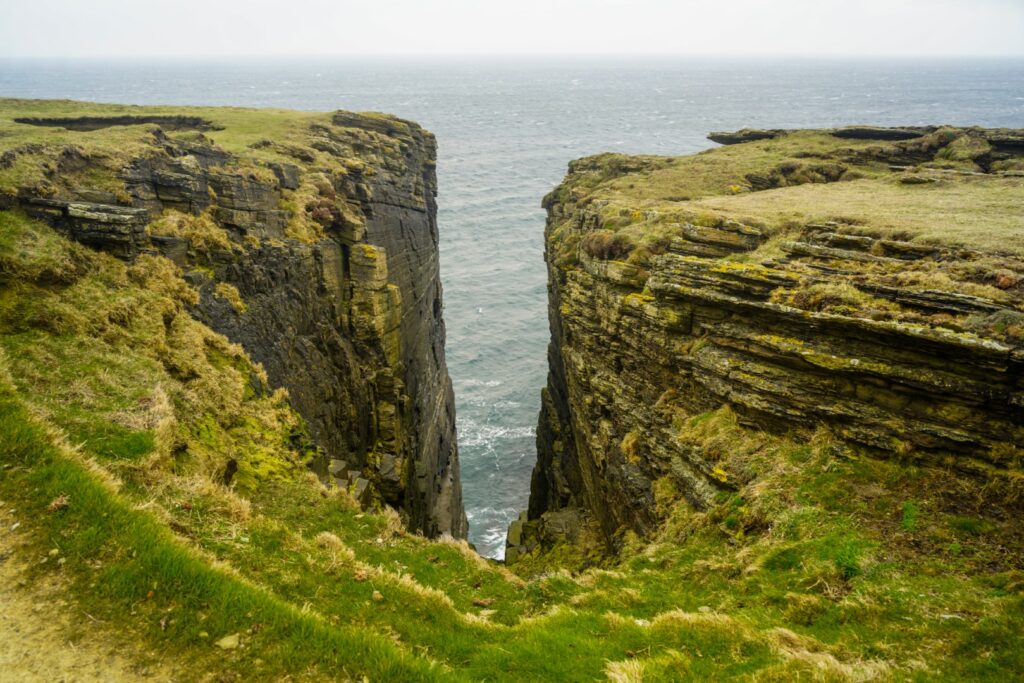
Earl’s Palace of Birsay
Our last site of the day was the Earl’s Palace in the small village of Birsay.
Built in the late 16th century by Patrick Stewart, the Earl of Orkney, the palace was designed in a Renaissance style and served as both a noble residence and a center of administration. Despite its current ruinous state, the castle’s impressive structure and grand scale make it an intriguing place to explore. Walking through its remains, you can still get a sense of its former grandeur, with high walls, intricate doorways, and the vast central courtyard.
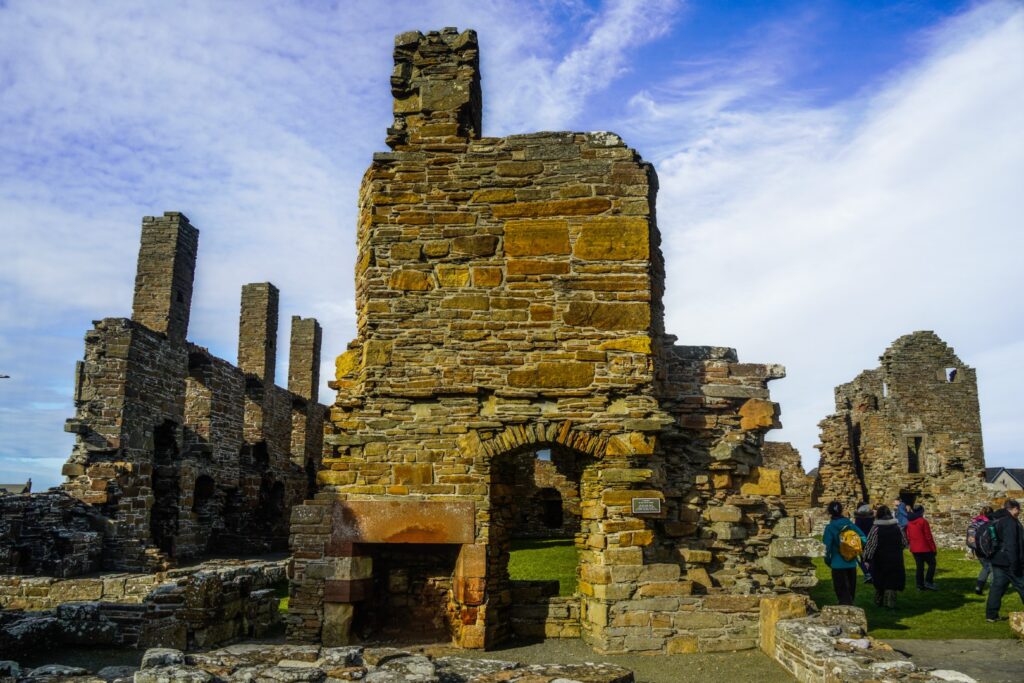
Twatt
No, that’s not me calling you names! Twatt is an actual village on Orkney, and we got to drive through it on our way back to Kirkwall!
Unfortunately, there was no town sign in the village (maybe it got stolen too often?), so I couldn’t get the selfie I had planned. But I do have a screenshot of us driving through it – so I have proof that I went to Twatt!
Evening poster presentations
That evening, we had our much-anticipated poster session, where we all got to showcase the academic posters we’d created for the trip. I had worked on two posters: a group poster for the Northern Peoples and Culture class about the Stones of Stenness, and an individual poster for the Archaeology of Death class on the Wideford Hill Chambered Tomb, a quirky little tomb we visited the next day.
The evening was a lot of fun – I enjoyed presenting my work and reading everyone else’s posters. Oh, and there were birthday cakes and candles to blow out for both me and my professor, who I share a birthday with! It was an unusual birthday, for sure, but I thoroughly enjoyed it!
Day 3: Back to the Neolithic + some wartime heritage
Day three was the last day of our Orkney field trip, and we split up in the morning – those doing Archaeology of Death would visit more Neolithic tombs, while the others would focus on sites from World War 2. Since I was enrolled in both classes, I got to choose which group to join, but it was a no-brainer for me. I love Neolithic tombs, and besides, we’d be visiting Wideford Hill, the tomb I’d done my academic poster on!
Wideford Hill Chambered Cairn
Wideford Hill was our first stop, and it was a rainy one indeed. Apparently, the weather is always bad up there – on the previous year’s field trip, they even had to endure an actual snowstorm! But we got “lucky” and “only” had rain and strong winds. It was a bit of a hike to reach the chambered cairn, but it was a fun and easy walk that I really enjoyed.
The chambered cairn is of the Maeshowe type, just like Cuween Hill, but what makes Wideford Hill unique is its lack of human bones, which is likely due to poor excavation methods in 1849.
I tried to look for the scratch art that was found inside the tomb in 1999, but there was so much modern graffiti everywhere that it was impossible to see anything. I really wish people would leave cultural heritage sites alone, as this kind of vandalism has ruined any chance of finding undiscovered Neolithic rock art at the site.
Unstan Stalled Tomb
Our minibus acted as a time machine and took us to Unstan – an atypical hybrid of the Maeshowe type of tombs and stalled tombs, the latter of which is the earliest type of Neolithic tomb in Orkney, predating the Maeshowe tombs by about 500 years.
Located on a promontory that extends into the Loch of Stenness, Unstan is remarkable both architecturally and for its stunning views. From the site, there’s a gorgeous view over to the Ring of Brodgar and the Stones of Stenness, with the surrounding landscape adding to the tomb’s sense of mystery and historical significance.
Maeshowe Chambered Cairn
Next, it was time to visit the type site of the Maeshowe tombs, and the most famous of the Neolithic tombs on Orkney – also the only one that’s part of the Heart of Neolithic Orkney UNESCO World Heritage site.
Unfortunately, going inside Maeshowe isn’t permitted without a guide, but we were fortunate to have a knowledgeable and thorough guide who shared the history of the site with us. While Maeshowe’s Neolithic origins are fascinating, not much is known about its early use, as only a piece of a human skull has been found. It is thought to have contained many more bones and possibly grave goods, but these were likely looted at some point in history.
What makes Maeshowe particularly captivating, however, is the number of runic inscriptions left behind by Norse intruders in the 12th century – essentially, ancient graffiti! These runes don’t offer much information about the site or the carvers themselves, but they do reveal a bit about the egos of the Norsemen. Many of the inscriptions simply read something like “so-and-so was here” or “so-and-so is the best carver west of Scandinavia.” Big egos, huh? It’s a curious reminder that, even in the past, people had the urge to leave their mark on places they visited.
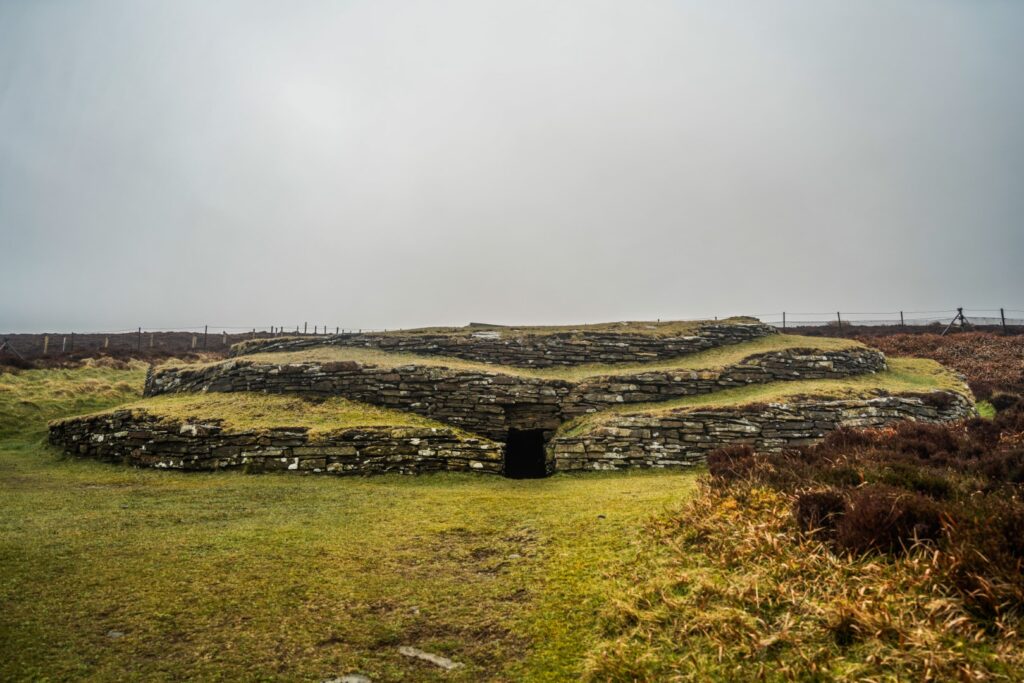
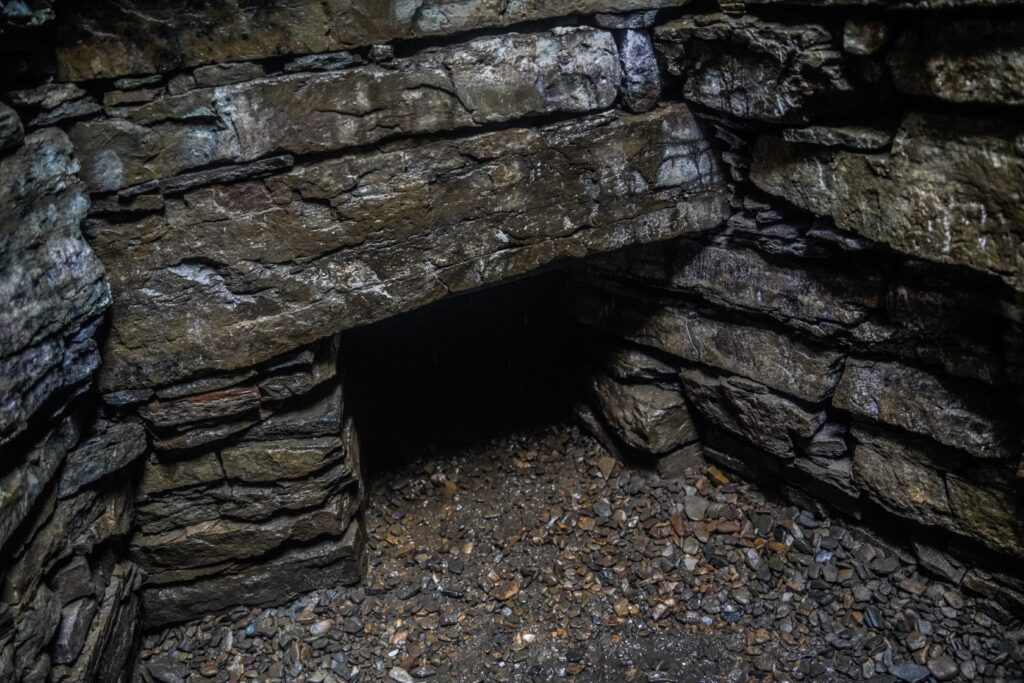
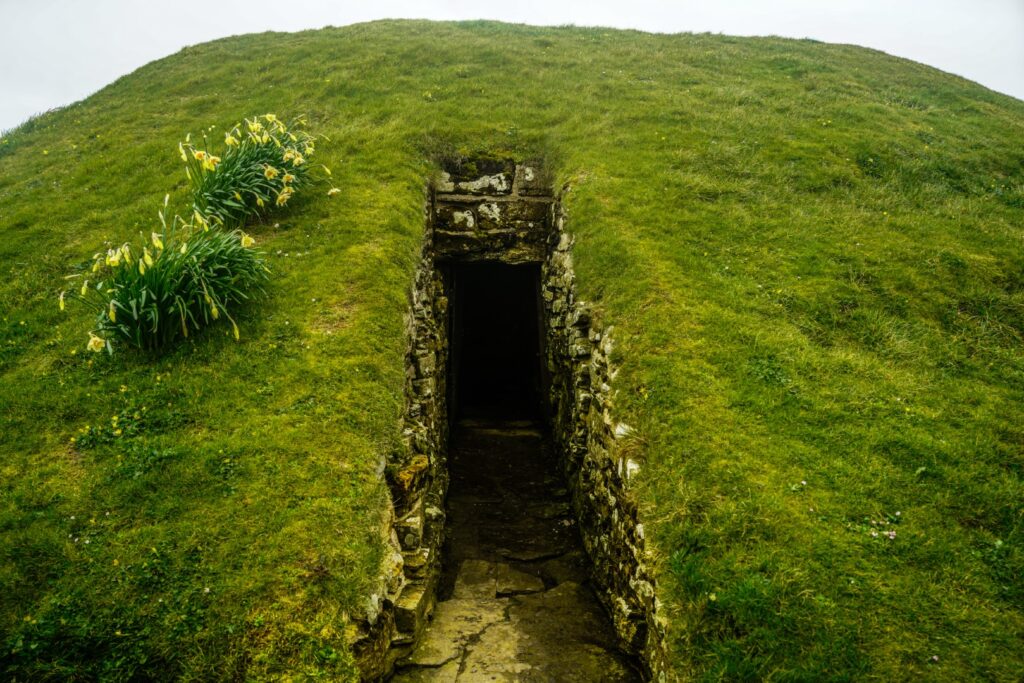
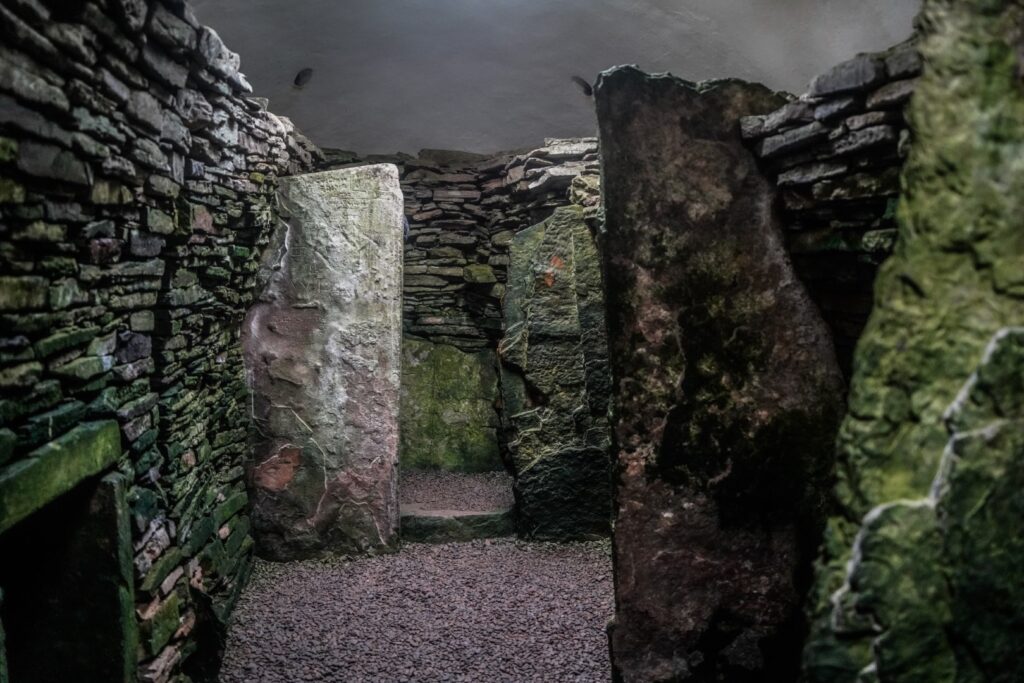
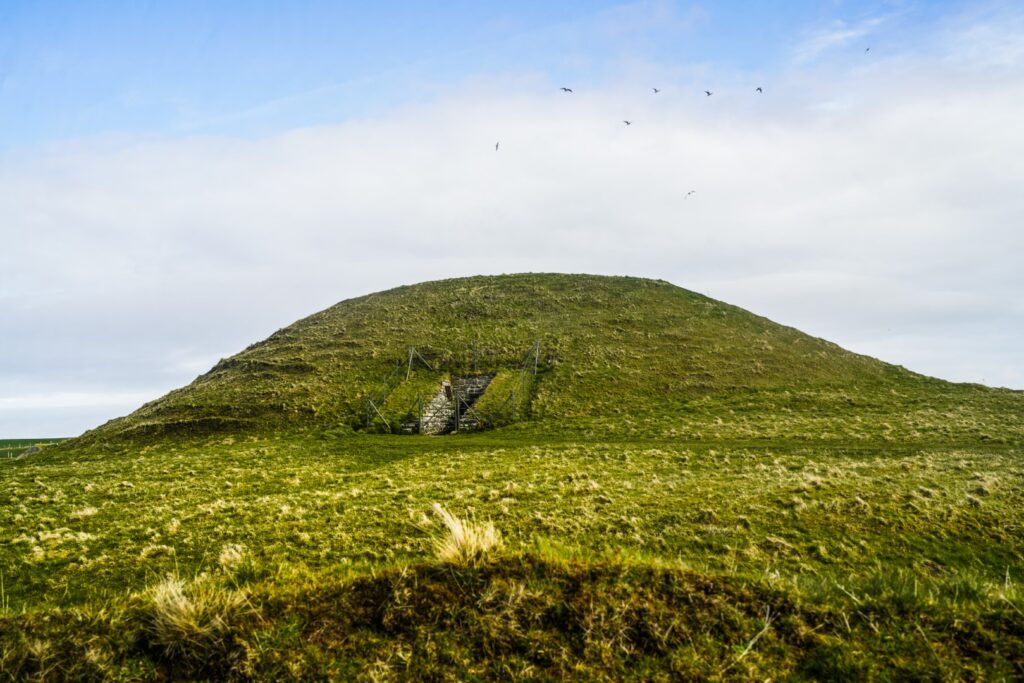
Lunch in St Margaret’s Hope, South Ronaldsay
After our morning of Neolithic tombs, we met up with the others at Robertson’s Coffeehouse & Bar in St Margaret’s Hope on the island of South Ronaldsay, which is connected to Mainland by causeways that also link the island of Burray, as well as the two islets, Lamb Holm and Glims Holm.
We had a bit of time to wait after lunch, so I decided to go for a stroll through the village, eager to see what it has to offer. The village is tiny, and it didn’t take much longer than ten minutes to see it all, but I really enjoyed it. I especially loved its little Community Garden and the many old houses, each adding to the charm of the place.
I was surprised to learn afterwards that it is actually Orkney’s third largest village, although it’s home to only around 550 people!
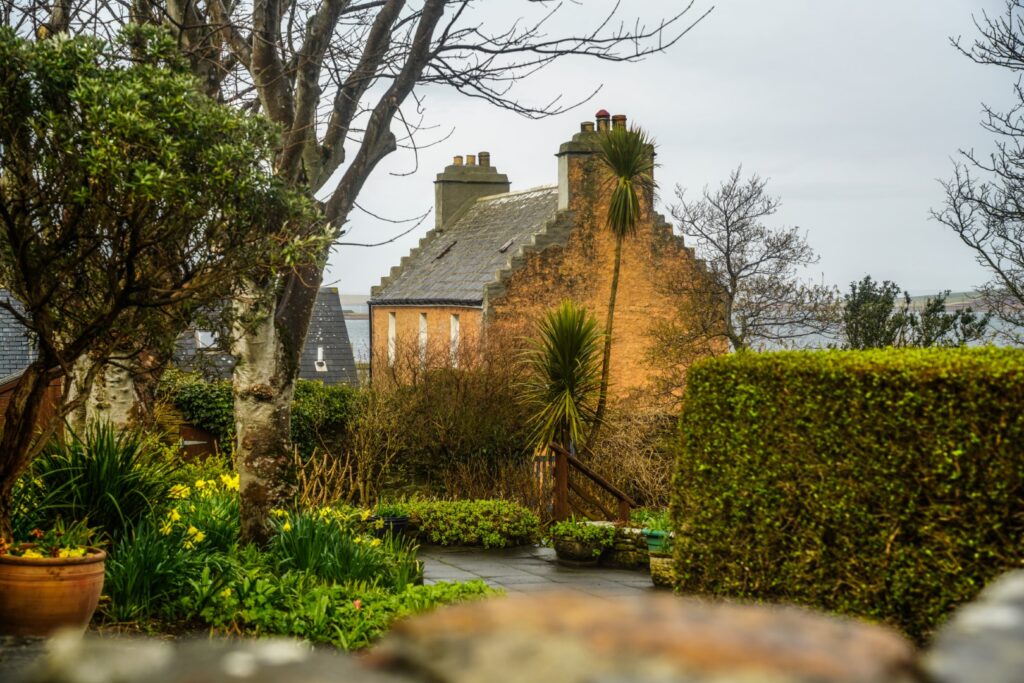
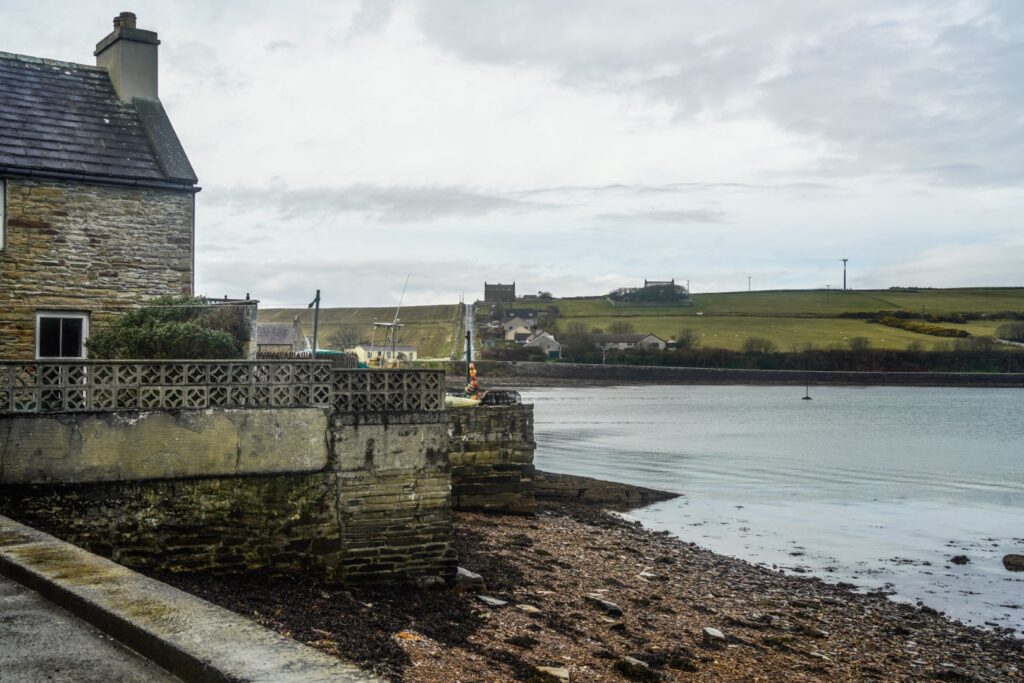
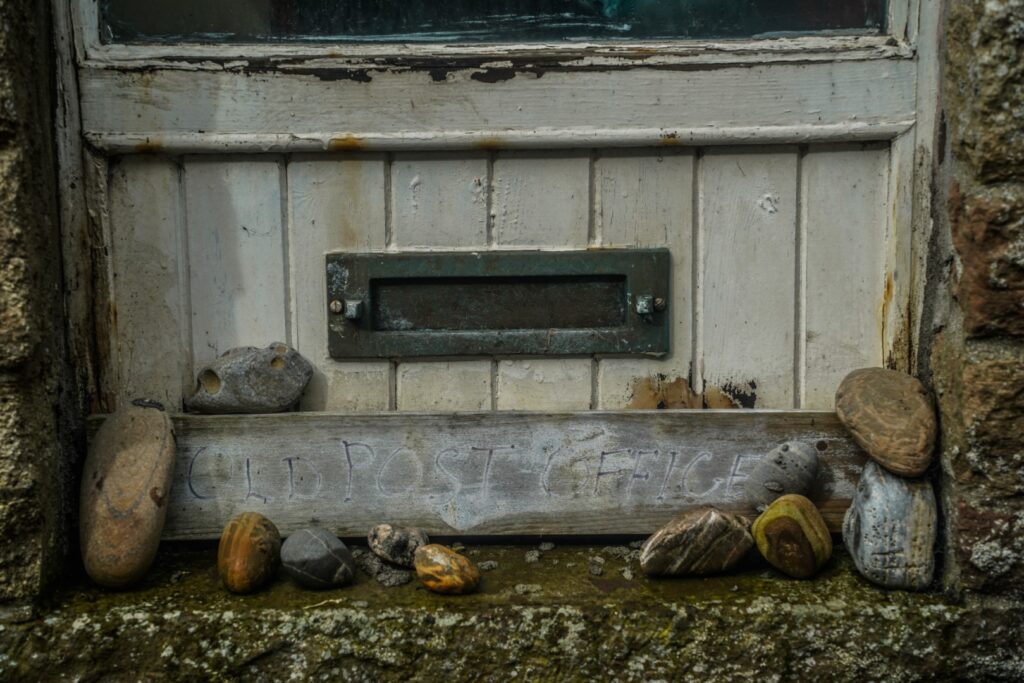
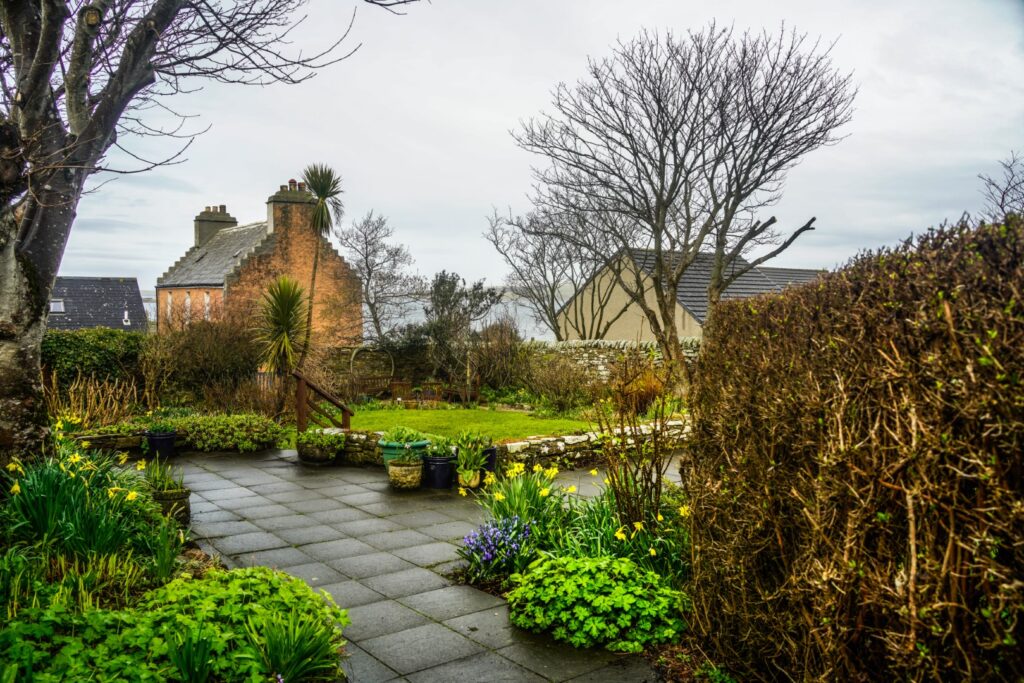

A strange structure in the dunes of Burray’s causeway
On our way north, we made a surprise stop at the causeway linking South Ronaldsay with Burray, as one of our lecturers wanted to show us a funky site of unknown origin. We walked through the dunes for a while before it finally peeked up through the grass. At first, I thought it might be a bunker, as it resembled many similar-looking bunkers I’d seen along the Danish west coast. But when we looked inside the structure, it seemed more like a wooden ship, though the outer structure was made of cement.
Our lecturer’s best guess was that it’s the remains of a shipwreck, possibly encased in cement to preserve it. But why? It’s definitely a strange sight – something I’d never seen before!
Afterwards, we walked along the beach to get back to the car – the first time I touched the sand of Orkney!
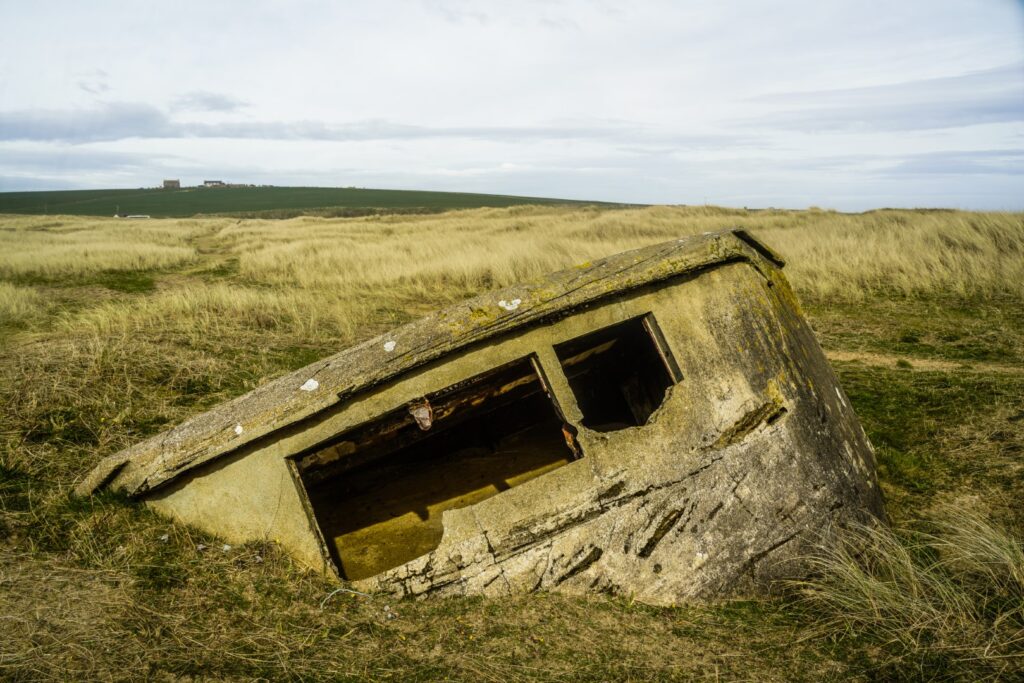
The Italian Chapel and a WW2 Prison Camp
Our last stop of the day was on the tiny islet of Lamb Holm, where the Italian Chapel is located. It might seem strange to have an Italian chapel in Orkney, but there’s a logical reason behind it.
Back during World War II, at the height of the conflict, more than 1,000 Italian prisoners of war were captured by British forces in North Africa and brought to Lamb Holm to work. The prisoners were tasked with building the Churchill Barriers, a series of causeways connecting Orkney’s islands to protect the naval base at Scapa Flow.
While at the camp, the Italian prisoners were granted permission to build a Catholic chapel, which they created using limited materials and remarkable ingenuity. The chapel, made from a converted Nissen hut and decorated with beautiful frescoes, has since been restored and is now maintained by the local Orcadians, as the Italians were pardoned and returned to Italy after the war.
It’s unfortunate that the chapel is the only surviving structure from the prison camp, as the other buildings would’ve told a much more complex and crucial story about the treatment of prisoners during World War II – a story that, to put it mildly, wasn’t pretty. All that remains of the camp are foundations hidden behind a barbed wire fence, which feels like an attempt to erase a painful chapter of history. Still, it’s wonderful that so much effort has gone into preserving the chapel, even though the local Orcadians are neither Catholics nor Italians.
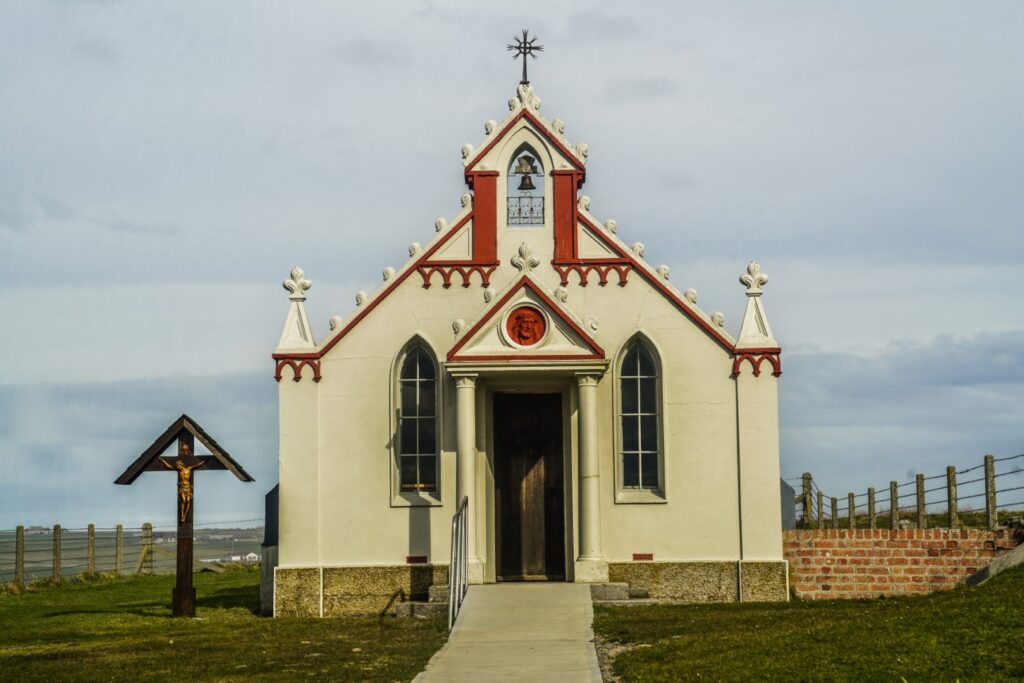
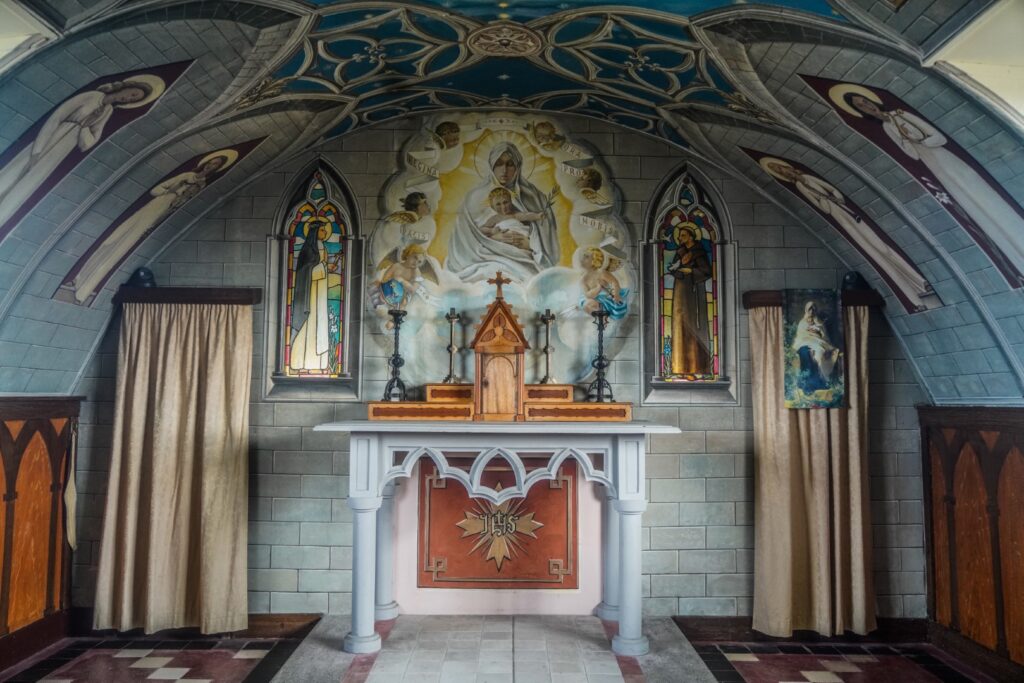
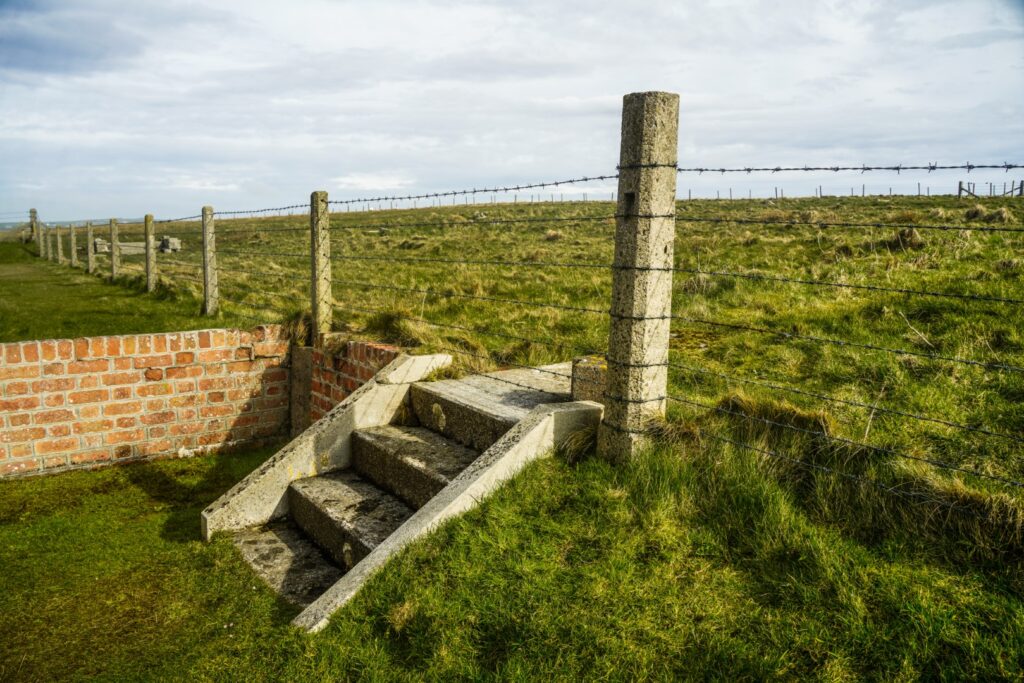
The visit to the Italian Chapel marked the end of our whirlwind field trip to Orkney, but it wasn’t the end for me and Sara. After a quiet night alone in our own rooms (much needed after being around people 24/7 for four days), we picked up our rental car and began our independent journey through some of Orkney’s other islands! But more about that later!
Additional Mainland explorations some days later…
Although Sara and I had planned our five-day extension in Orkney to explore the smaller islands, we ended up spending two of those days on Mainland. The first was because it rained all day, and the second was due to ferries not running on Sundays. Here’s what we got up to during those two days!
On our first rainy day after the field trip, we found ourselves sitting in the Tesco carpark after a big shopping spree, eating breakfast, and discussing our plans for the coming days. Fortunately, the rain was just a one-off, and we knew the sun would return for the next three days. We’d already checked off most of the sights we wanted to see on Mainland during our field trip, but there was one thing Sara really wanted to do: tour the Highland Park whisky distillery. I sat it out and waited for her while she took the tour.
Stromness
Later that night, we were booked on a ferry to the island of Rousay, but before that, we made a stop at Stromness, the second-largest town on Orkney, home to around 2,500 people. Stromness is much more compact than Kirkwall and feels more like a village than a town. Despite the gloomy weather, we enjoyed a leisurely stroll down the main street, popping into small thrift shops and other quirky little stores along the way. We also visited the town’s museum, which houses a rather unusual collection of ethnographic artefacts from around the world, with only a handful of archaeological and historical artefacts from Orkney. Not exactly what we’d expected from a small town museum, but still an interesting visit!
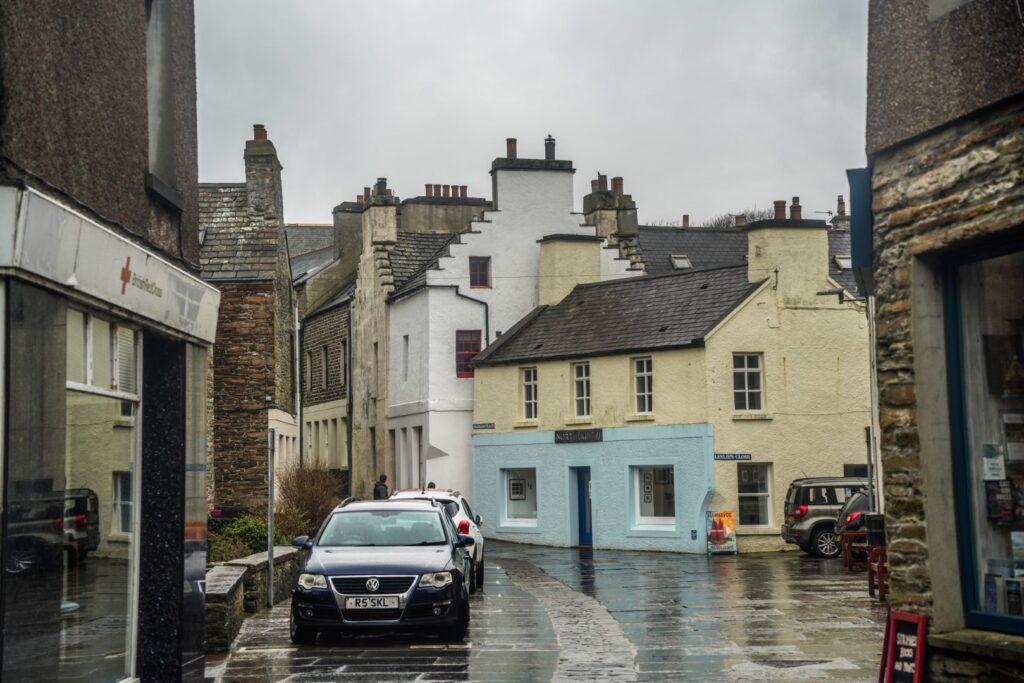
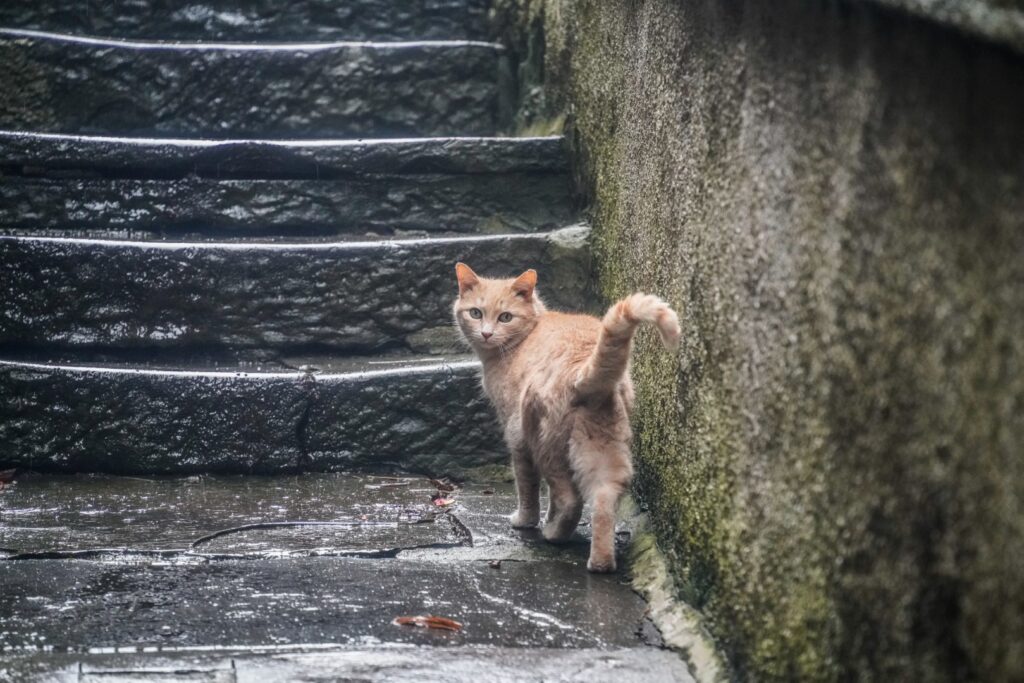
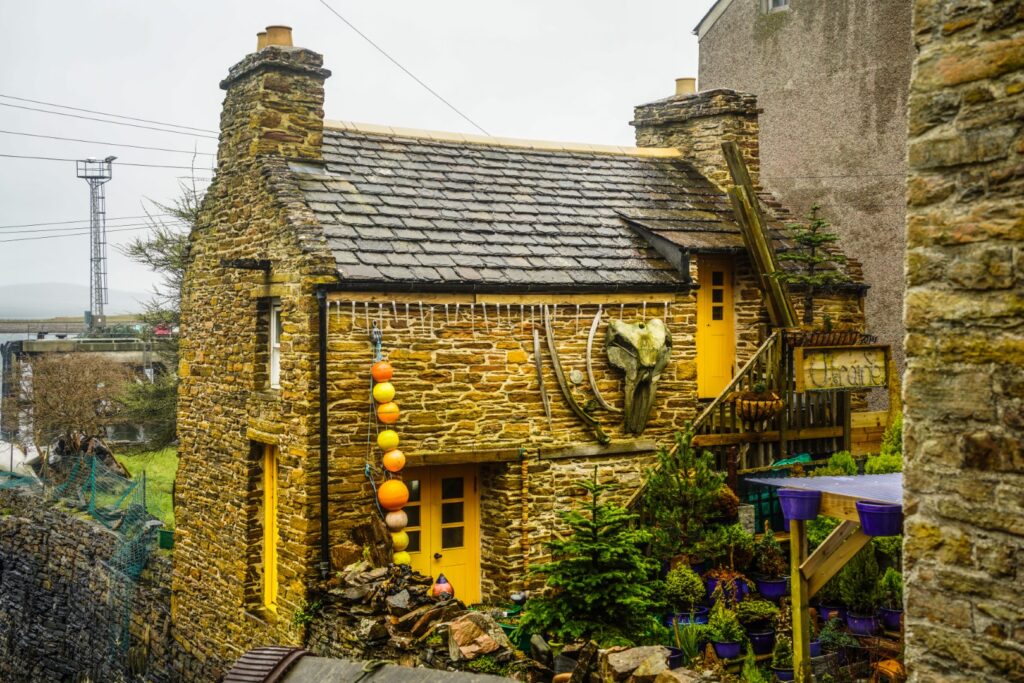
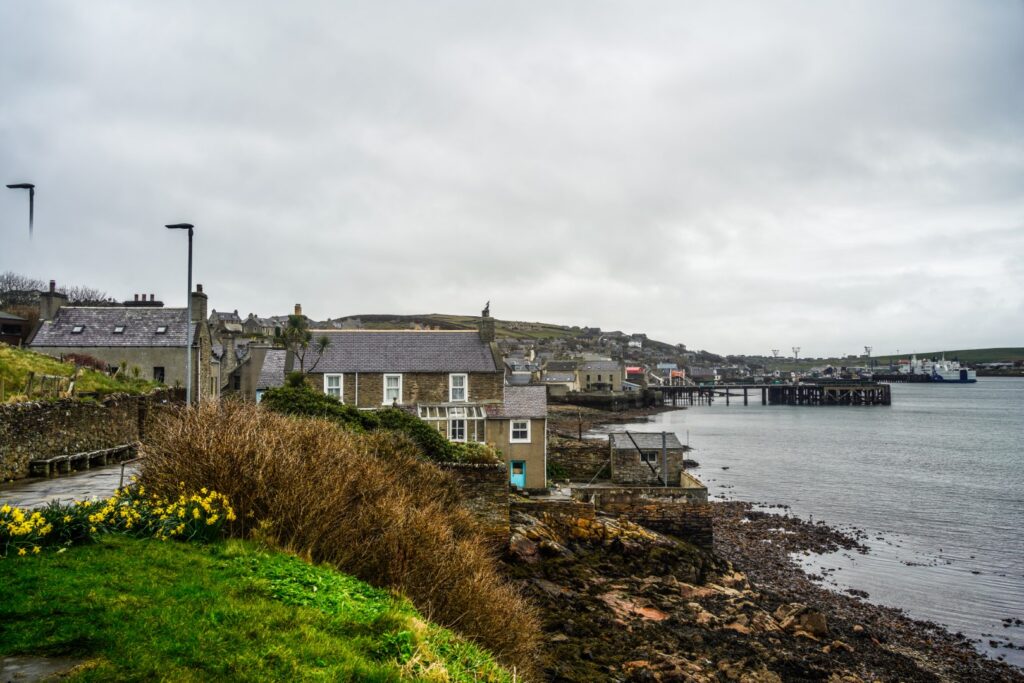
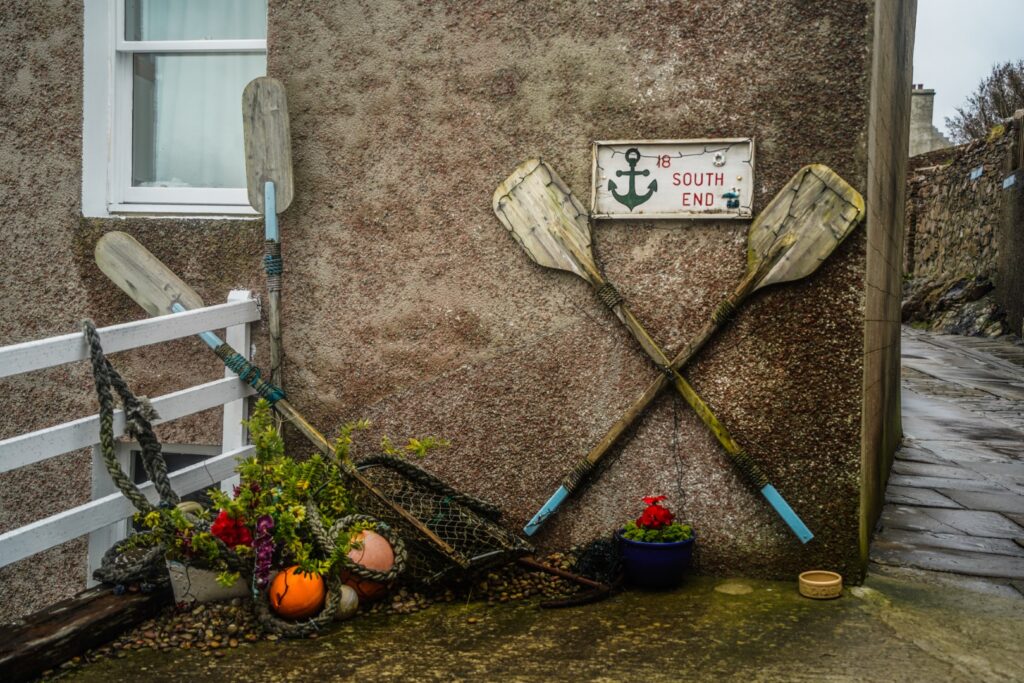
A pitstop on Glims Holm
On the Sunday on Mainland, we went down south and passed through the four islands connected to Mainland by a causeway. We made a quick stop at the southern end of Glims Holm, the only islet we hadn’t visited during our field trip. There isn’t much to see there, but since I’m eager to visit all islands and islets in Scotland, it felt like an essential stop. While there, we enjoyed a great view across to two shipwrecks in Weddell Sound, which made the stop worthwhile.
The Tomb of the Eagles and the Tomb of the Otters
The Tomb of the Eagles and the Tomb of the Otters are two Neolithic chambered tombs located in the south of South Ronaldsay. These sites are well known for their fascinating archaeological finds, including an abundance of human remains. The Tomb of the Eagles is particularly famous for the discovery of sea eagle talons, which were placed in the tomb around 1,000 years after it was built. Meanwhile, the Tomb of the Otter earned its name due to the presence of otter bones.
Both tombs were closed off during the Covid-19 pandemic and, unfortunately, they have never reopened to the public since. Despite this, we decided to give it a try and see if there was any chance of visiting. However, our hopes were quickly dashed when we arrived and were met with a sign that read “Sorry, permanently closed.” We couldn’t even get a glimpse of the tombs from the outside, which was a bit of a letdown.
Cairns O’ the Bu
On our way north on South Ronaldsay, we stopped above the picturesque village of Windwick, beautifully situated with high cliffs surrounding it and offering a view of two sea stacks. While the scenery was stunning, we weren’t there for the nature (though I would’ve loved to hike along the cliffs, but the wind was so strong that day, I think we’d have been blown right off!). Instead, we had come to explore Cairns O’ the Bu, an Iron Age broch (circular stone tower) and remains of domestic structures that we had randomly found on maps.me.
To our surprise, the site was under excavation. However, it seemed like no one had been there in quite some time, as the plastic that was supposed to cover the site had been blown around everywhere, exposing the remains and getting caught in barbed wire fences. It was probably the worst site covering I’ve ever seen!
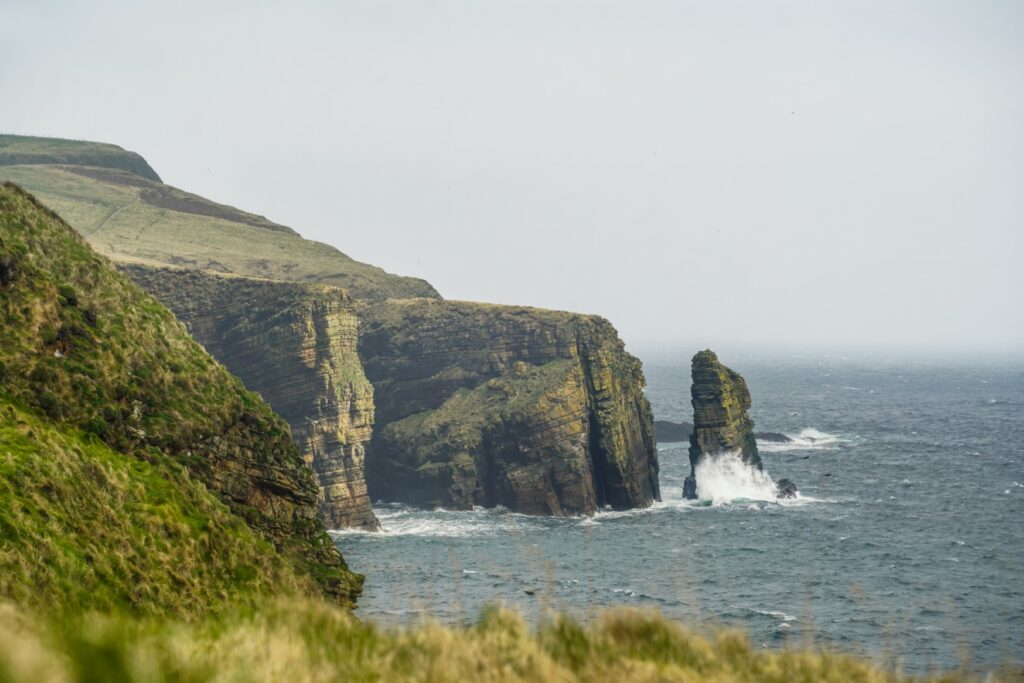

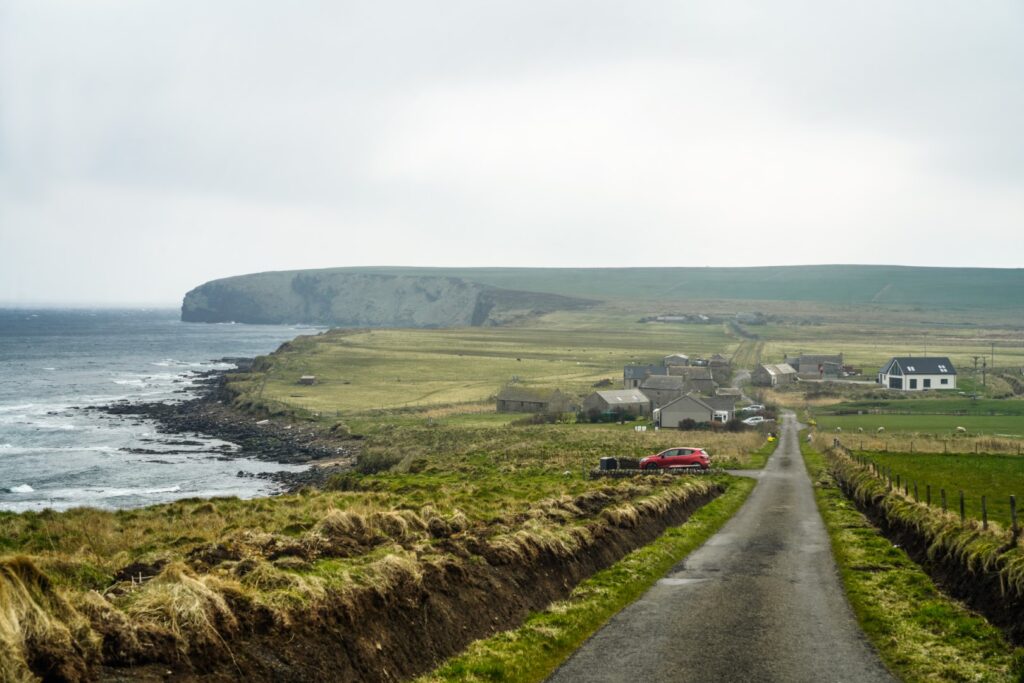
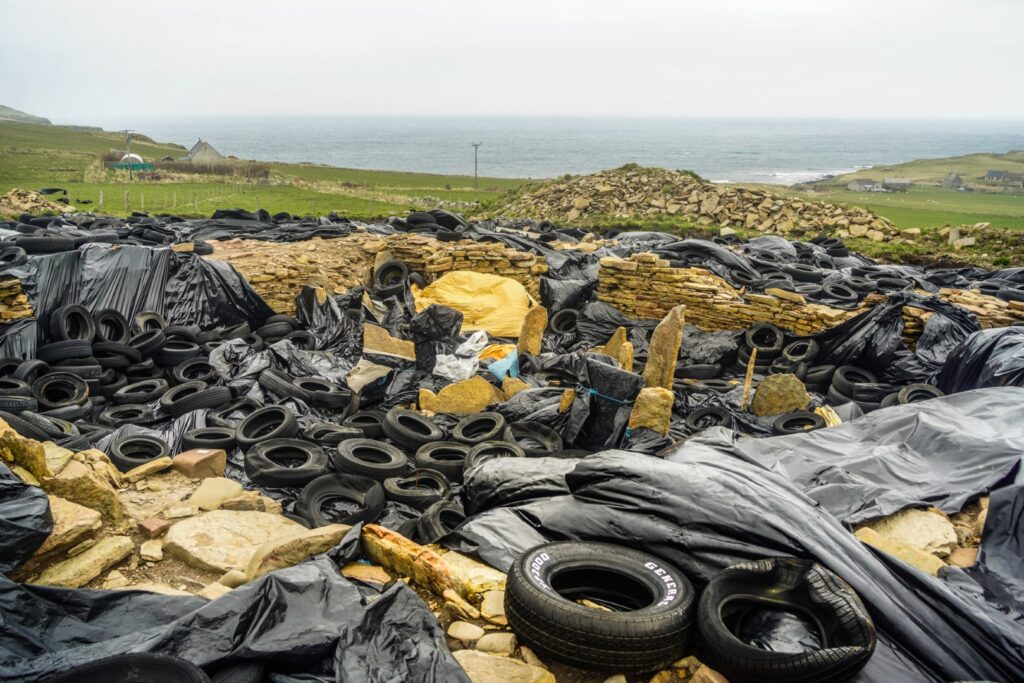
Mine Howe
Back on the mainland, we drove to yet another Iron Age site known as Mine Howe, a man-made underground chamber dug 6 meters deep inside a large mound. The origin and use of the howe is uncertain, but it is believed to have been built roughly 2000 years ago during the Iron Age. A replica on site gives visitors an idea of what the chamber may have once looked like.
The site is located on private land, and although we weren’t supposed to be there, the gate was open, making it all too easy to wander in. We were surprised to find the ancient chamber accessible, with no barriers to prevent tourists or animals from falling in. The staircase was broken, and the way down is now mostly a slippery mud tunnel. Naturally, we didn’t venture inside, but I did crawl into the replica, which resembled a Neolithic tomb from a distance.
The site had once been a popular tourist attraction, as evidenced by the rundown building that used to house the visitor’s center. Faded brochures from the year 2000, typewriter-written signs, and pink and yellow helmets were scattered about. The place was locked, so all we could do was peek in through the windows! The old visitor’s center felt like an archaeological site in itself!
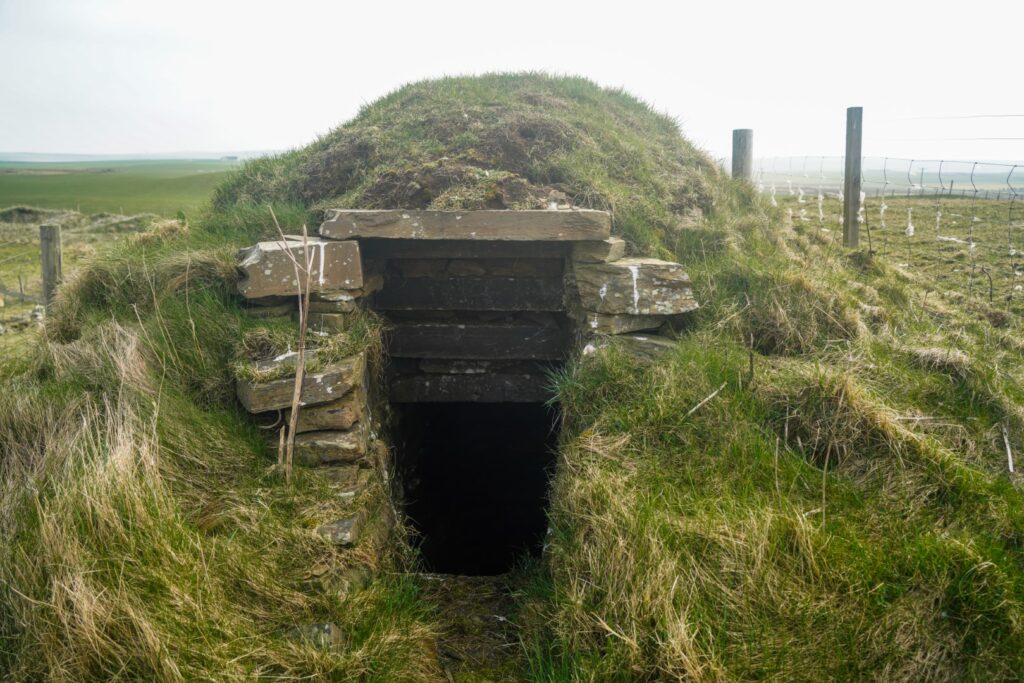
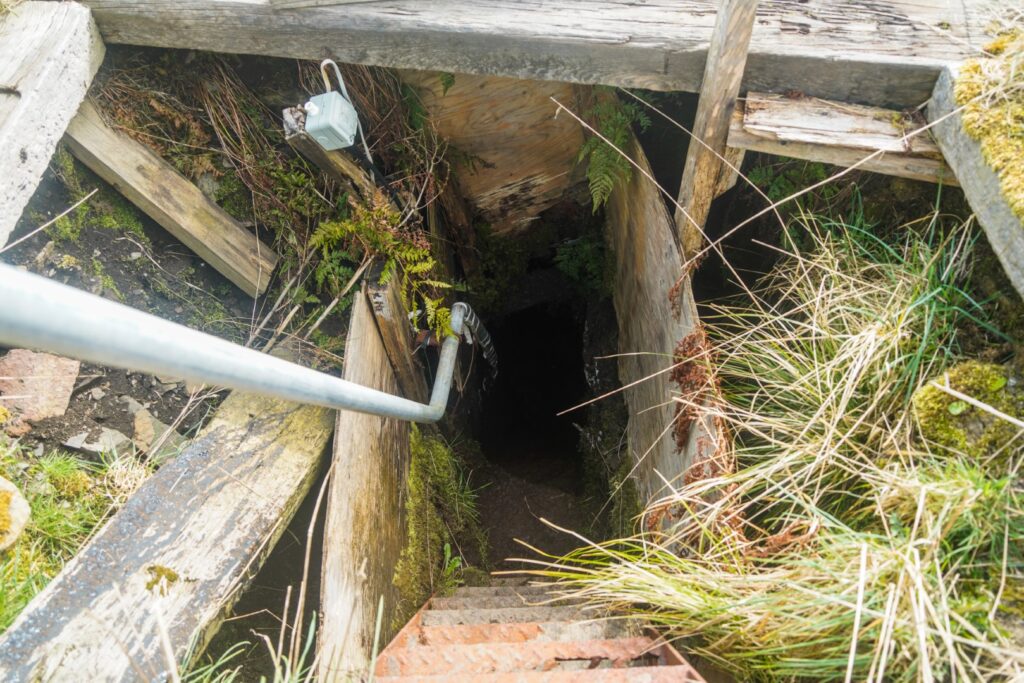
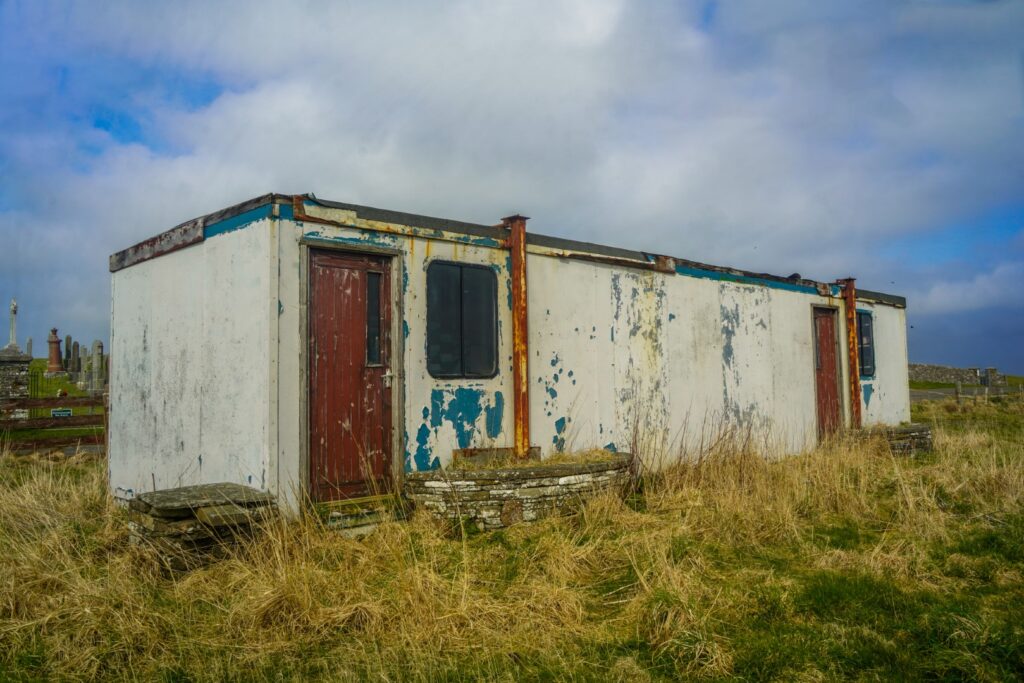
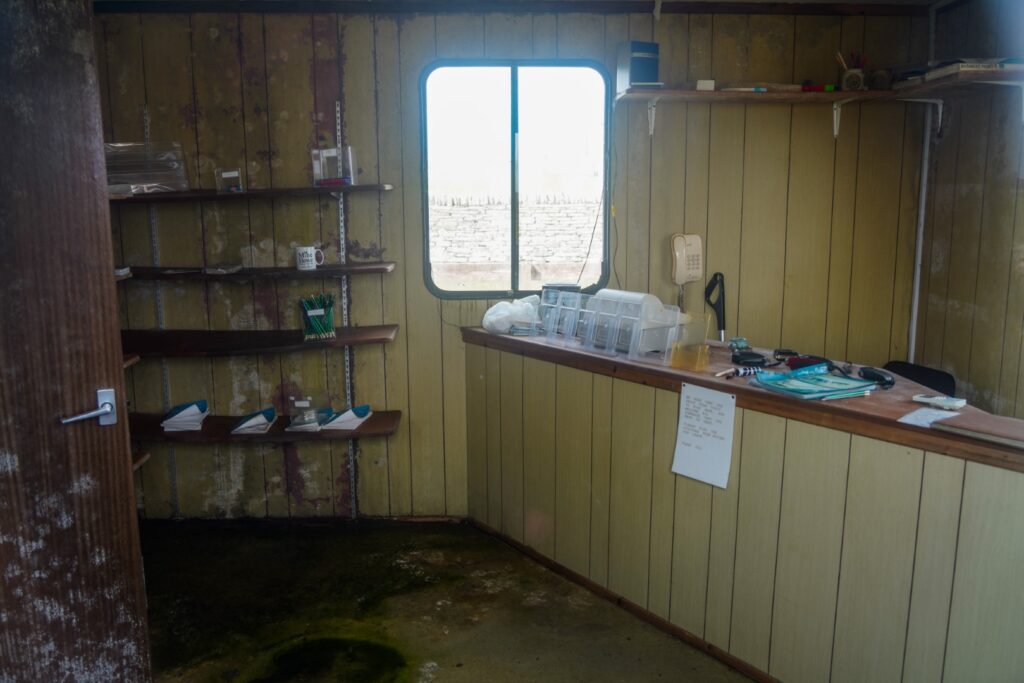
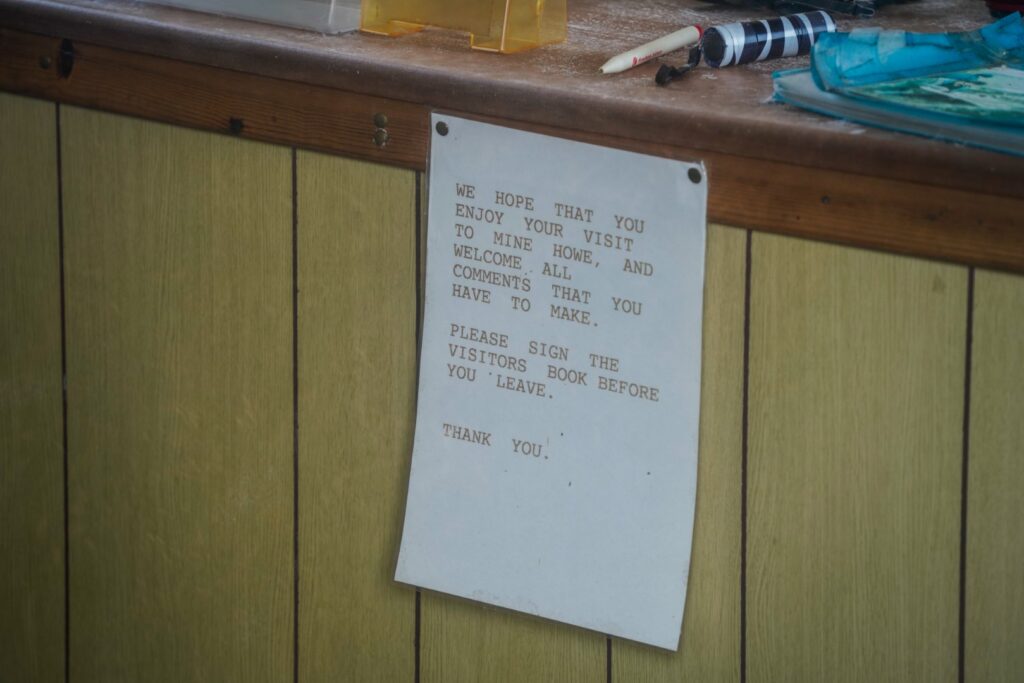
The tidal beach of Waulkmill Bay
Our professor had recommended the tidal beach at Waulkmill Bay and said it’s beautiful at low tide and in sunny weather. Well, it wasn’t exactly sunny, but it wasn’t raining either, so we decided to pay the beach not one visit, but two. Our first visit was during high tide, and the water had swallowed up all the sand, so we didn’t get to see much.
On our second visit at the end of the day, the tide had gone out, and we finally understood what he meant. It really is a gorgeous beach with the cleanest sand, but with the strong wind (gusts of up to 71 km/h!!), it definitely wasn’t sunbathing weather – though, I’m starting to wonder if that’s ever the case in Orkney!
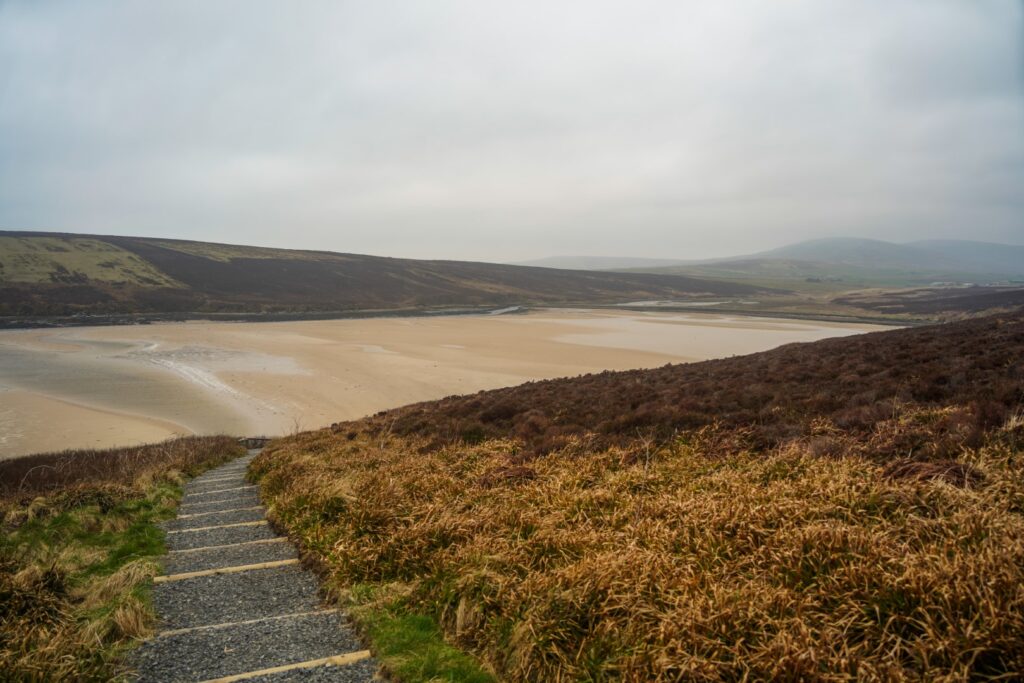
Our beach visit marked the end of our time on Orkney’s mainland.
The other days we spent on Orkney were divided between the islands of Rousay, Hoy, South Walls, and Sanday, but each of those islands will get their own post, so do stay tuned!

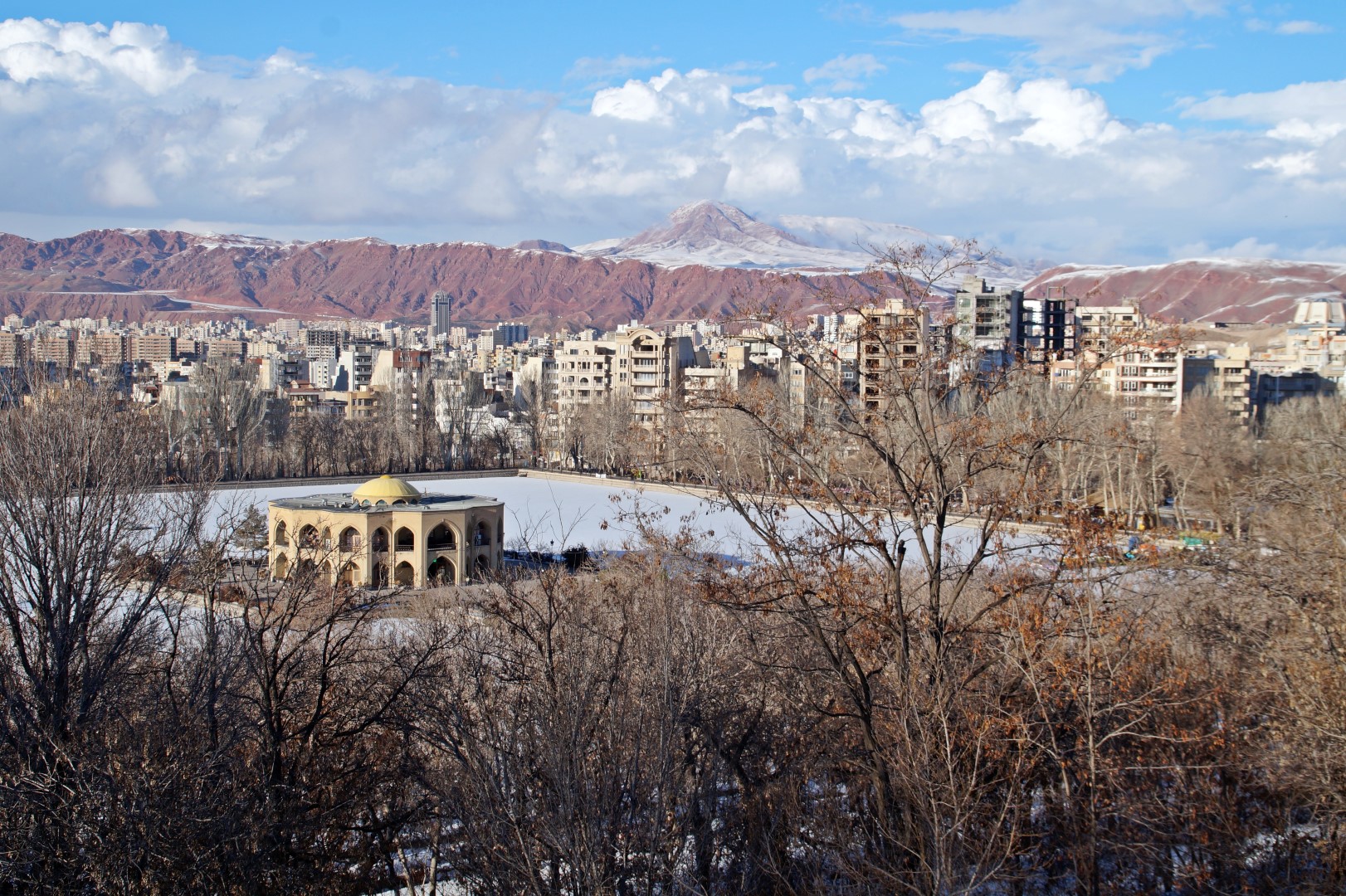
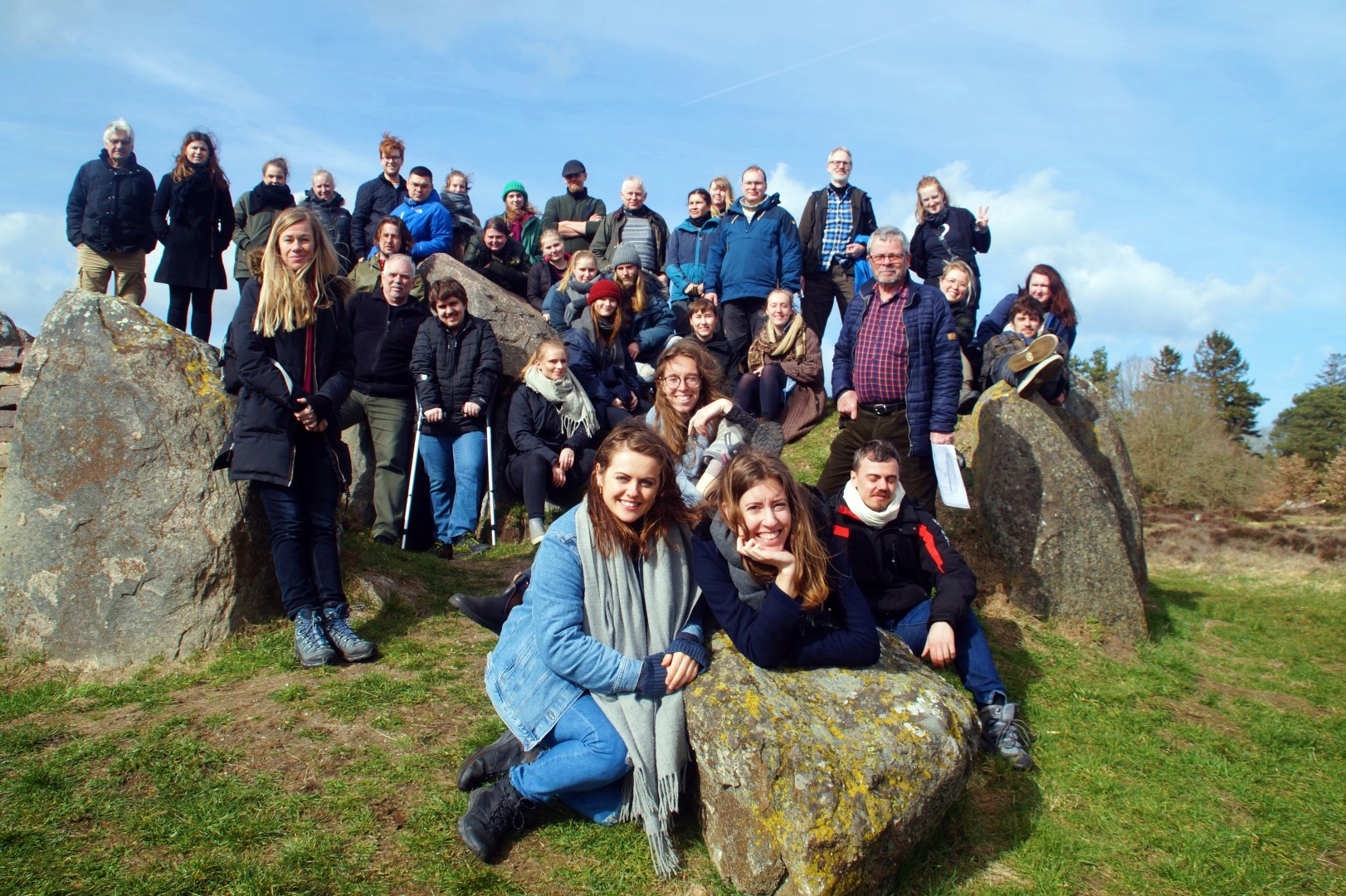
Leave a Comment